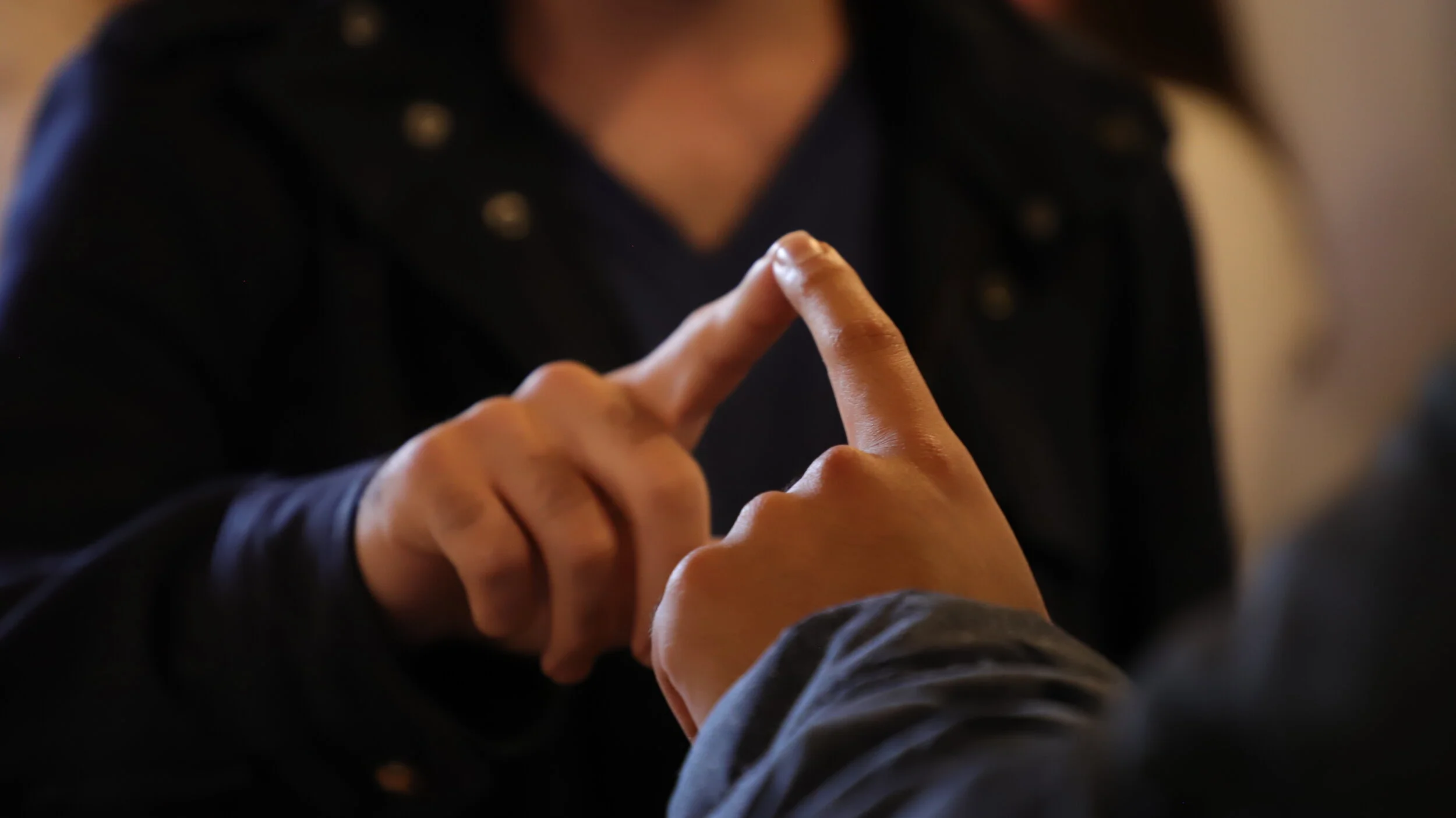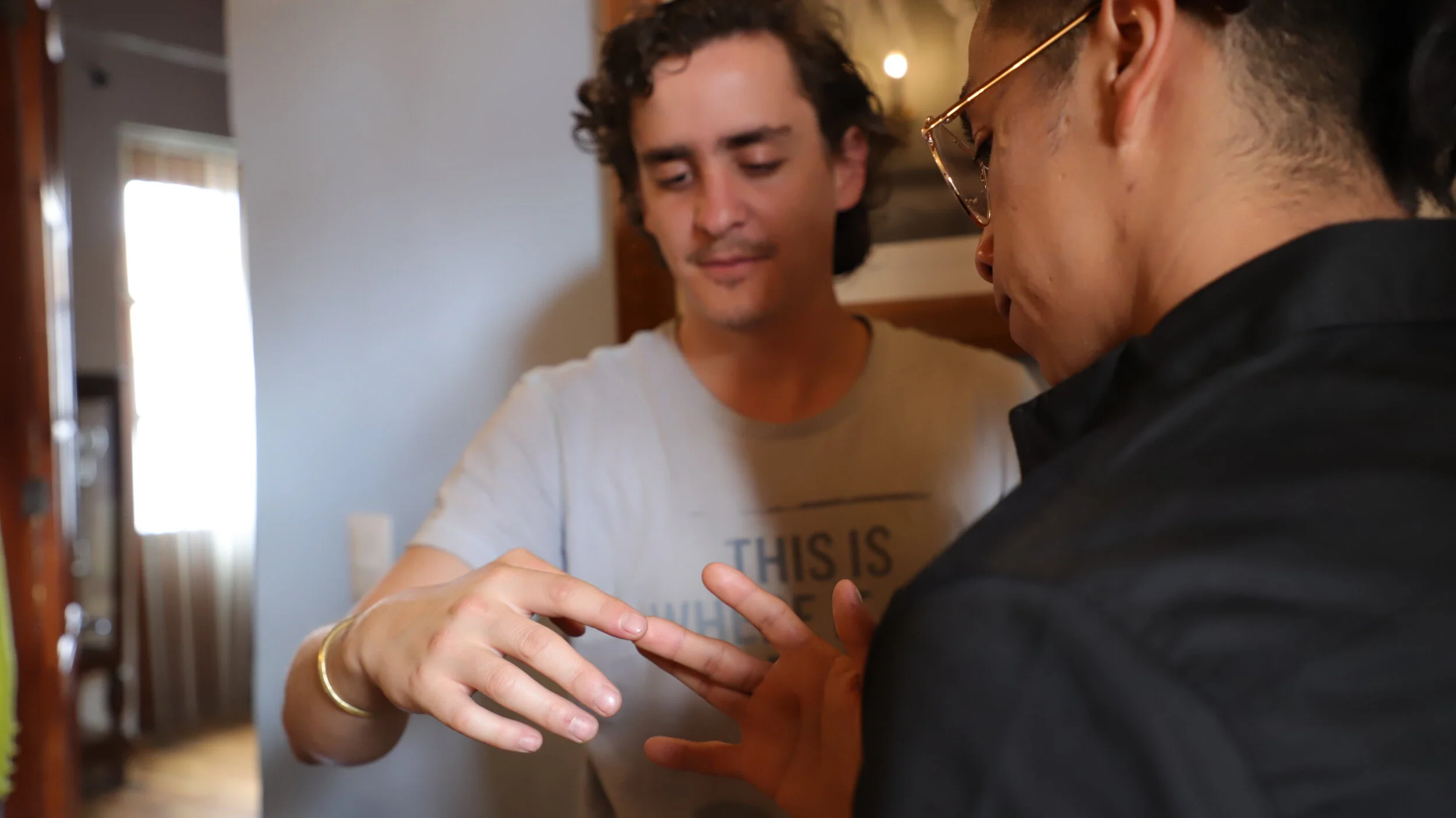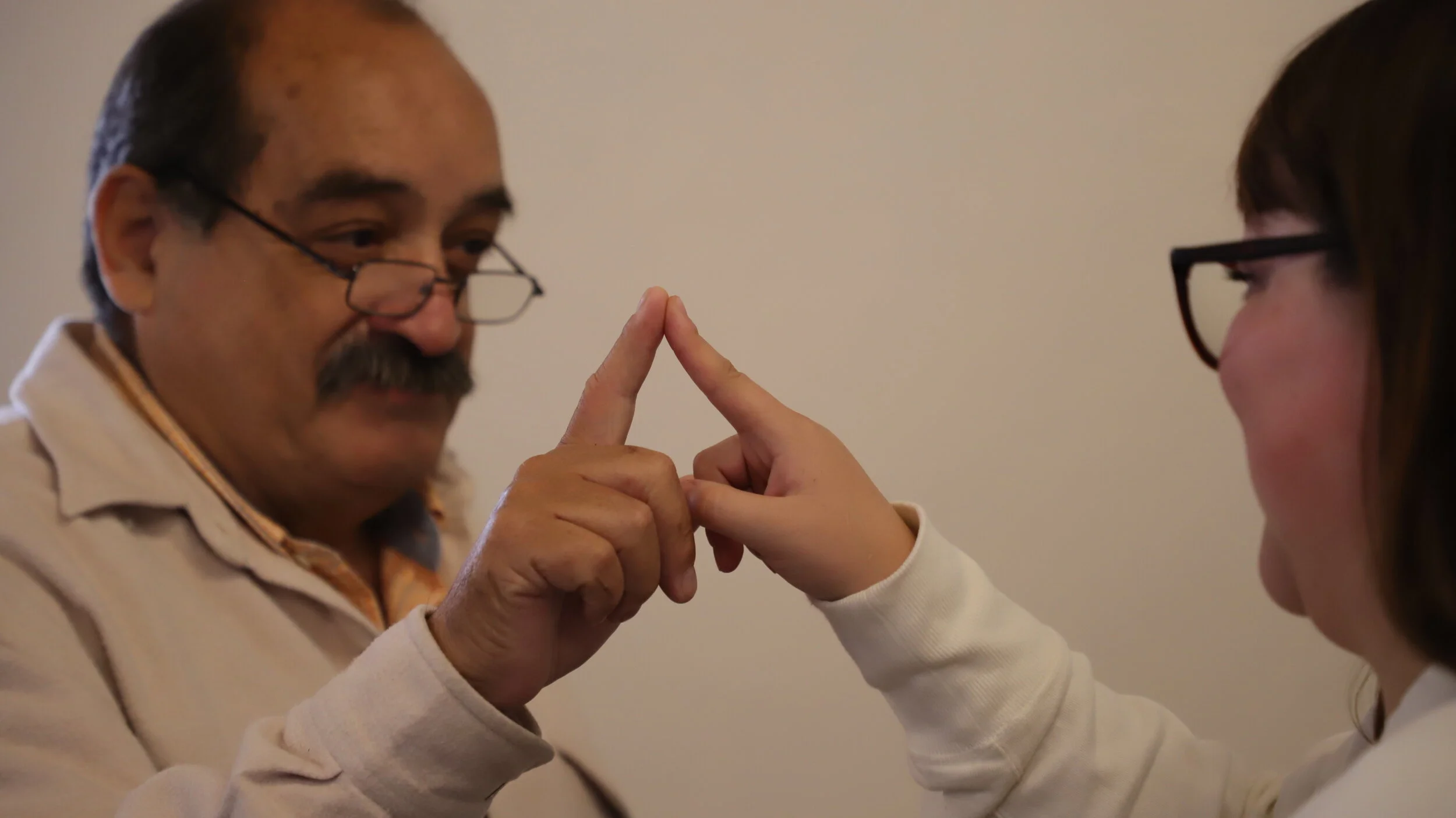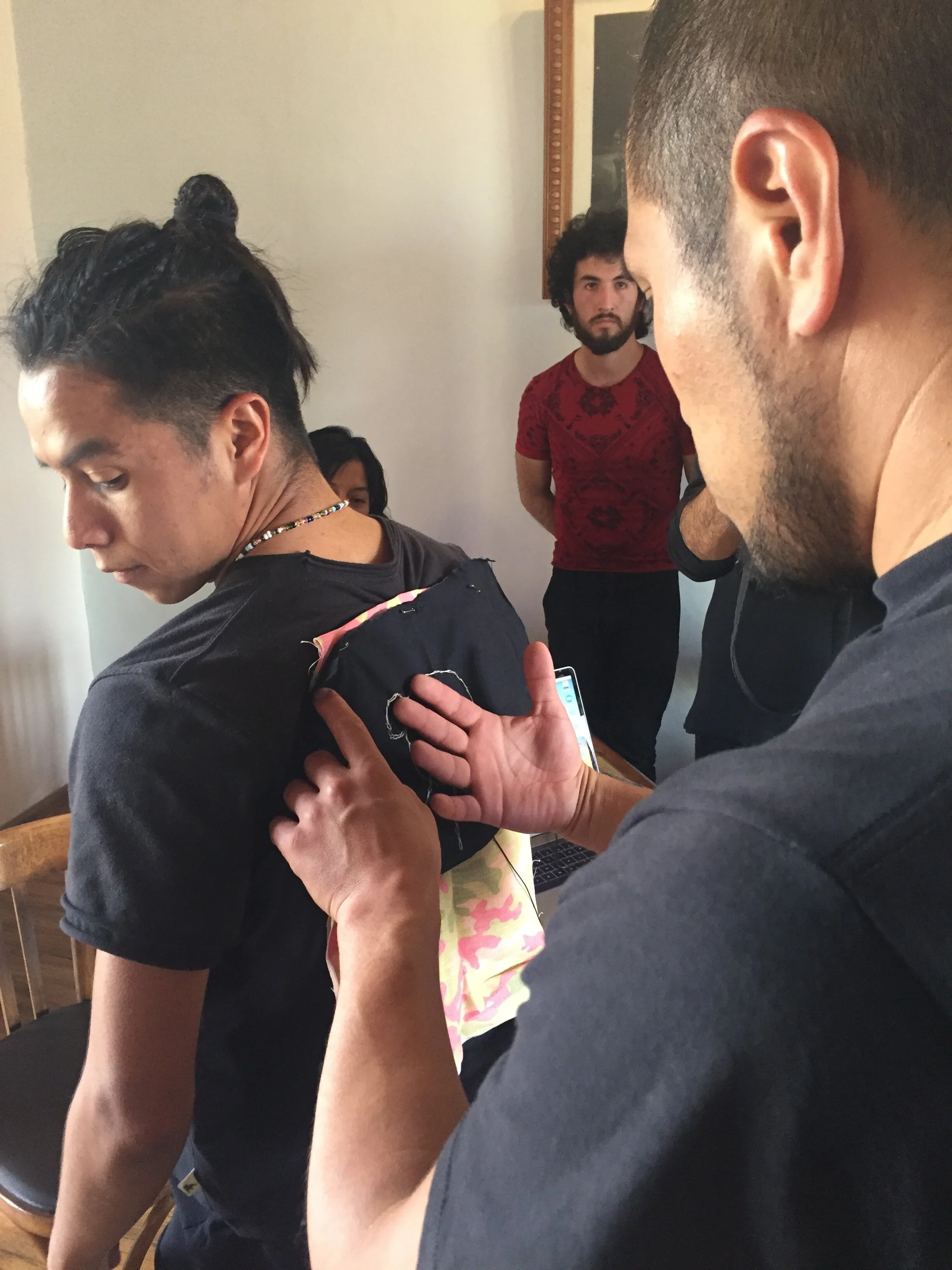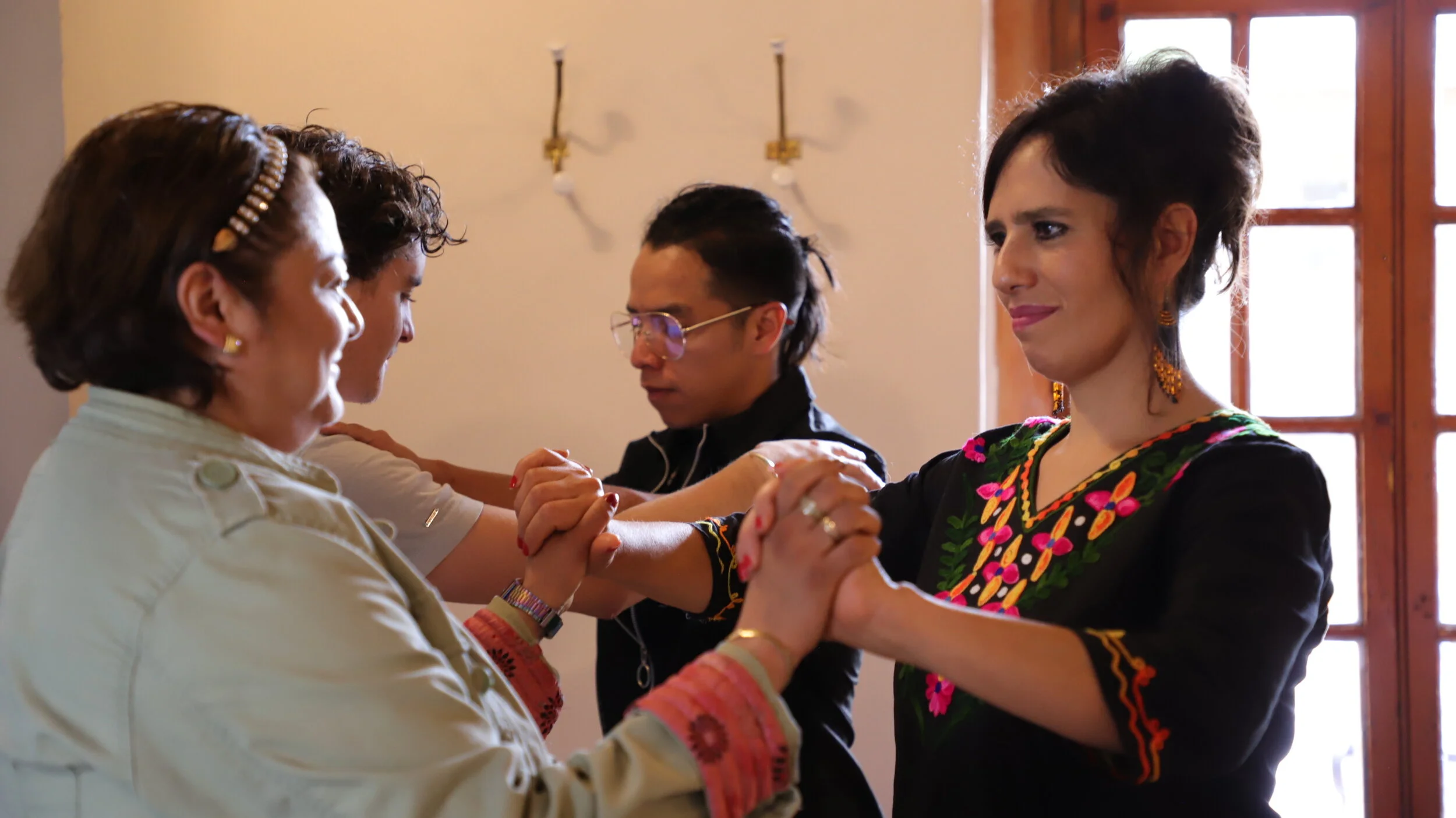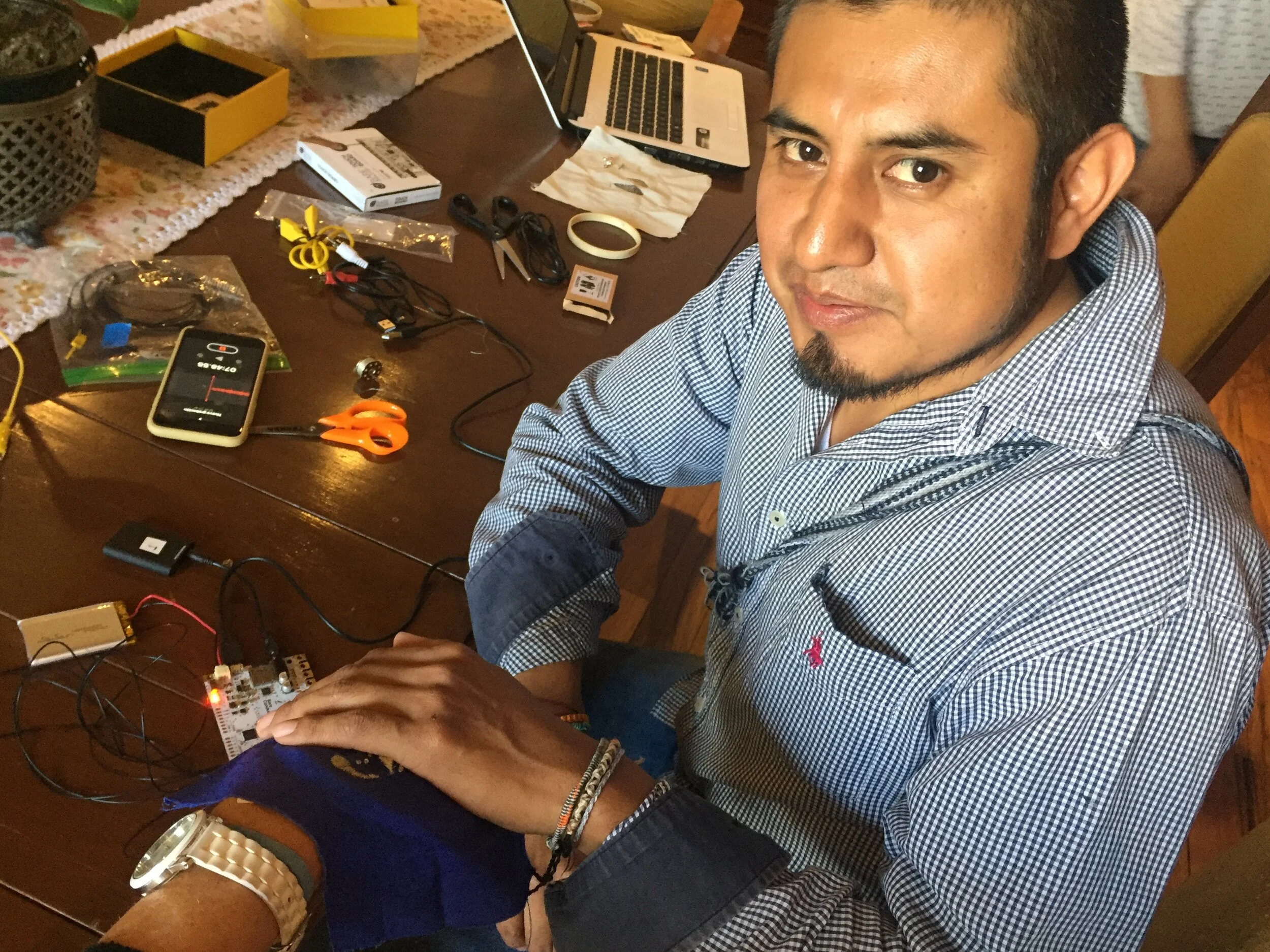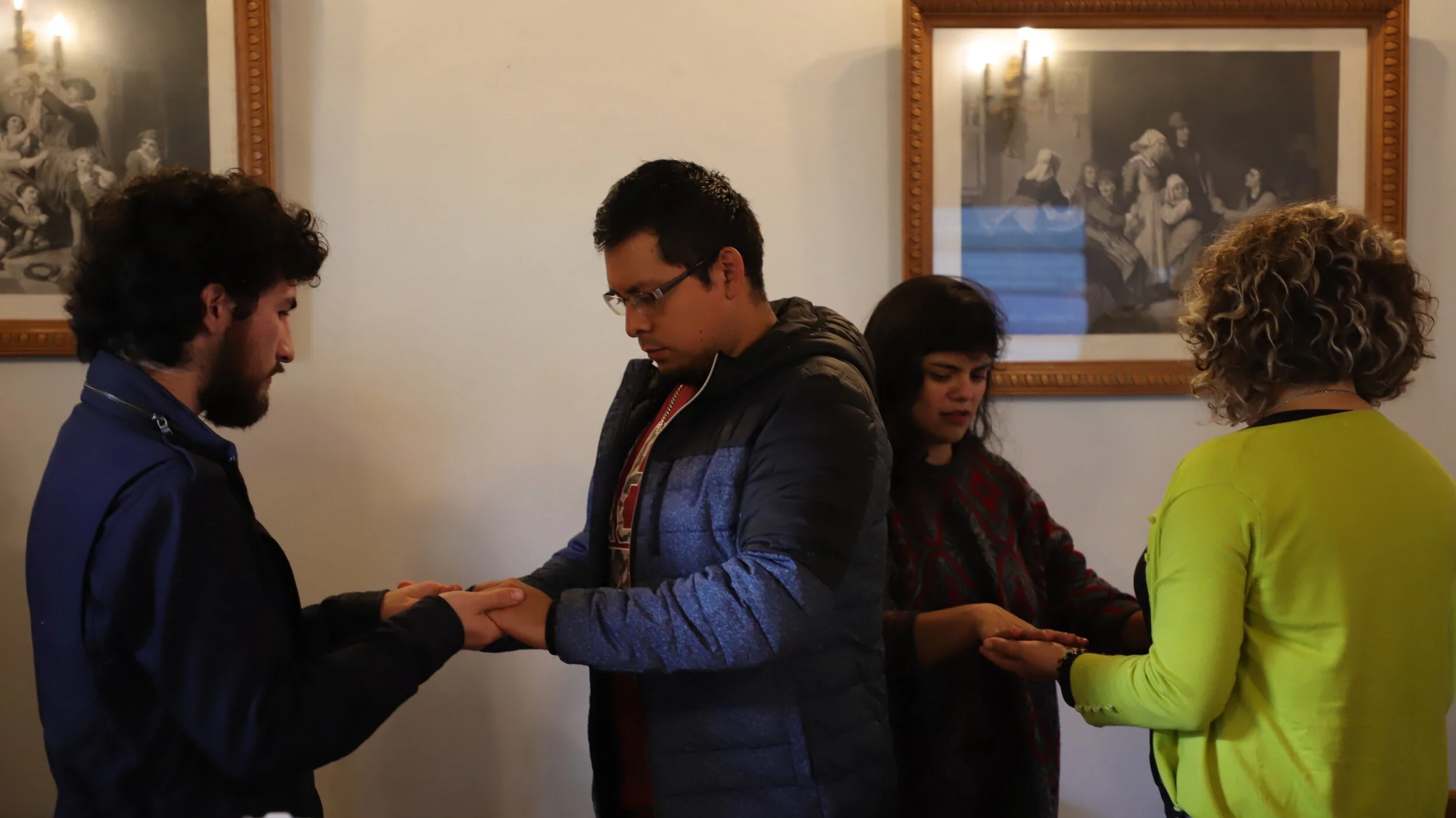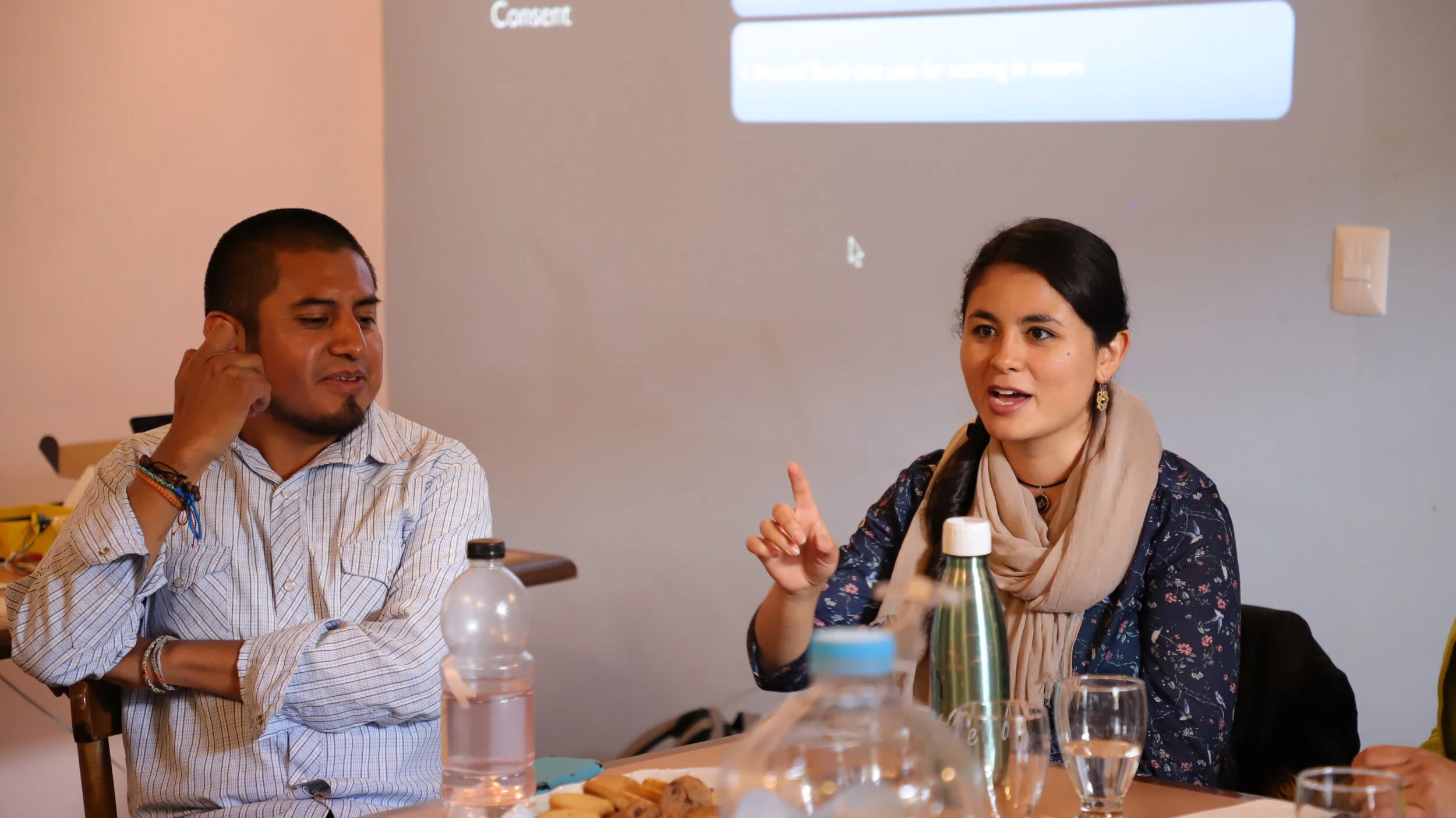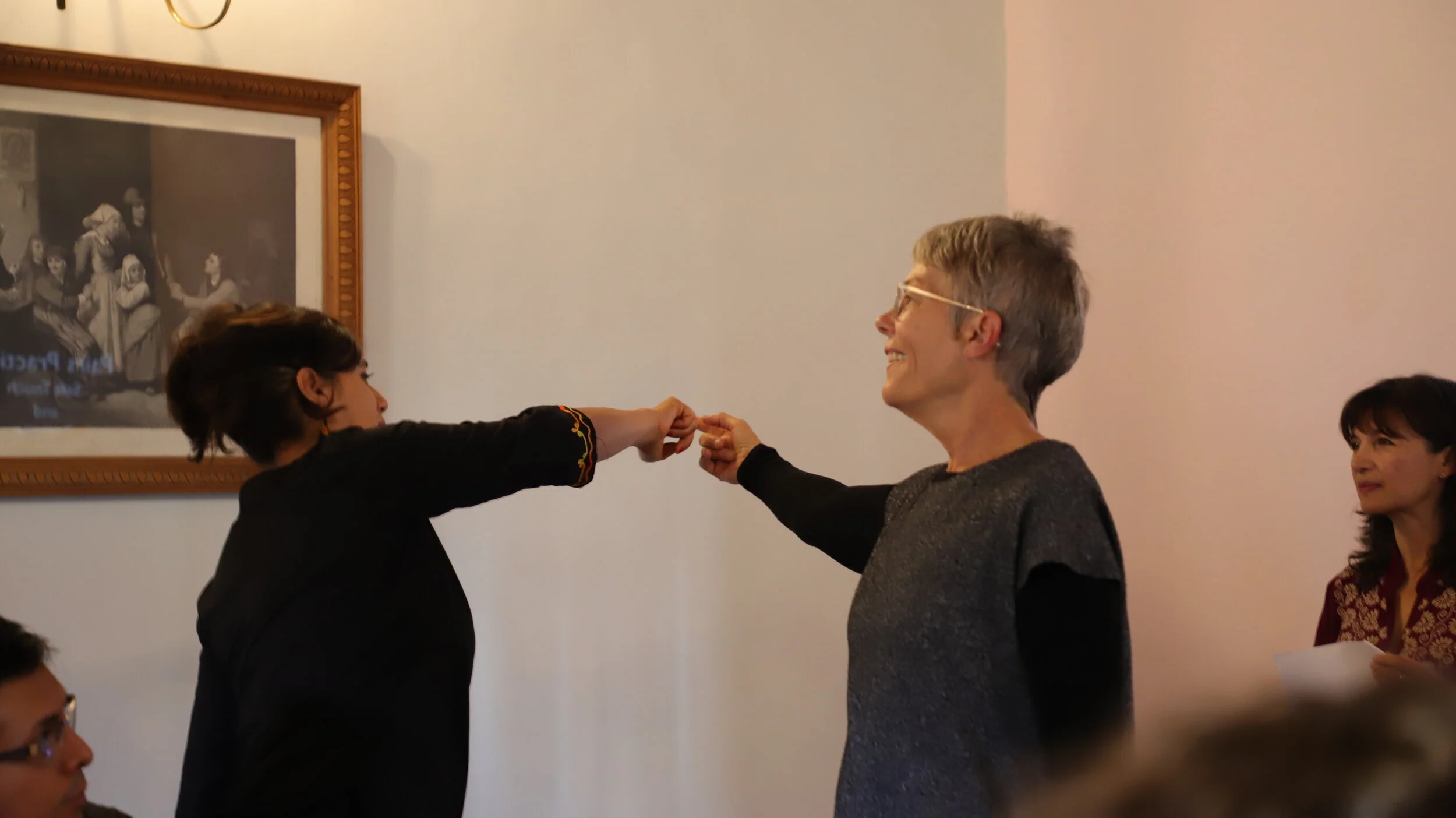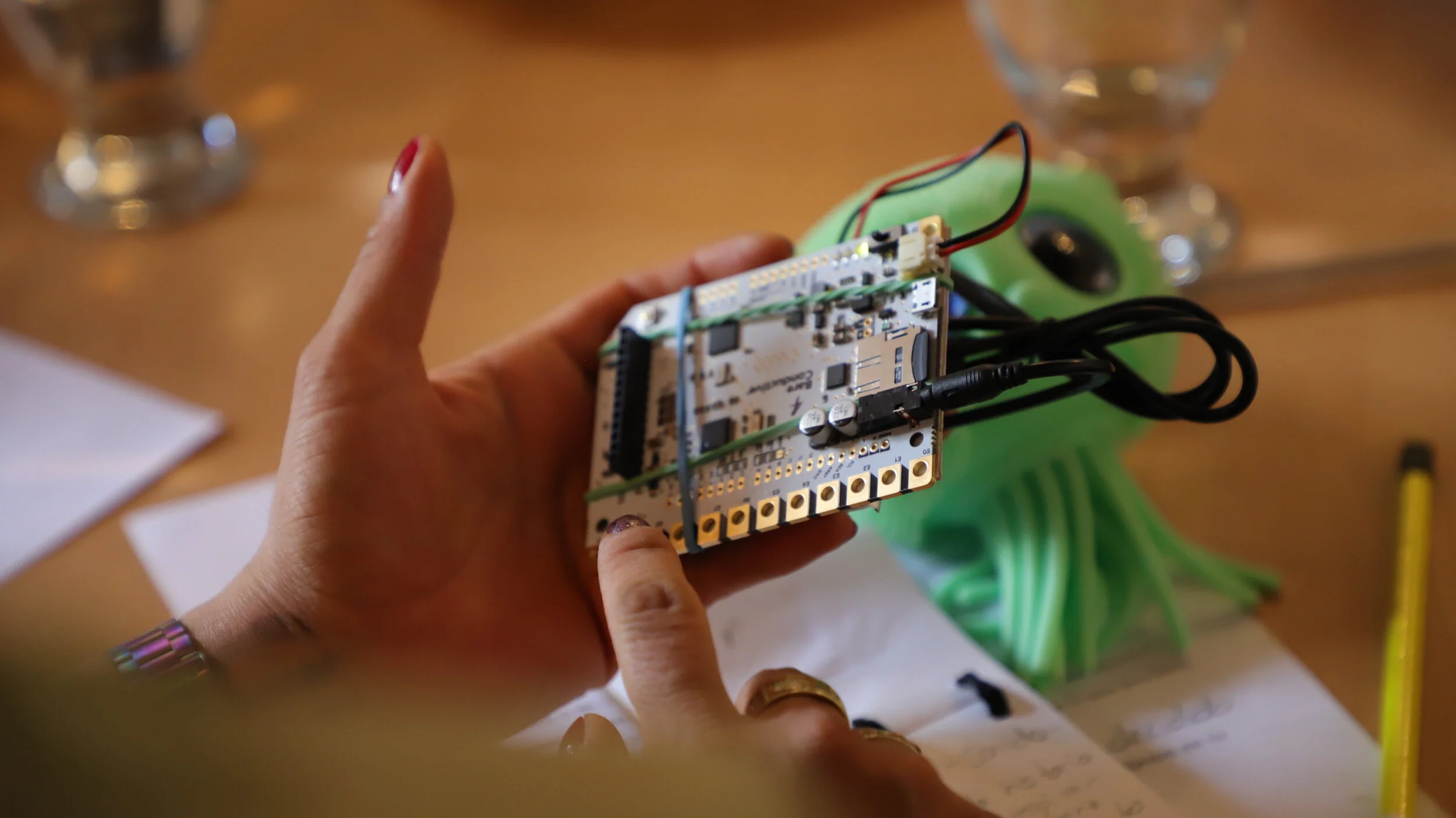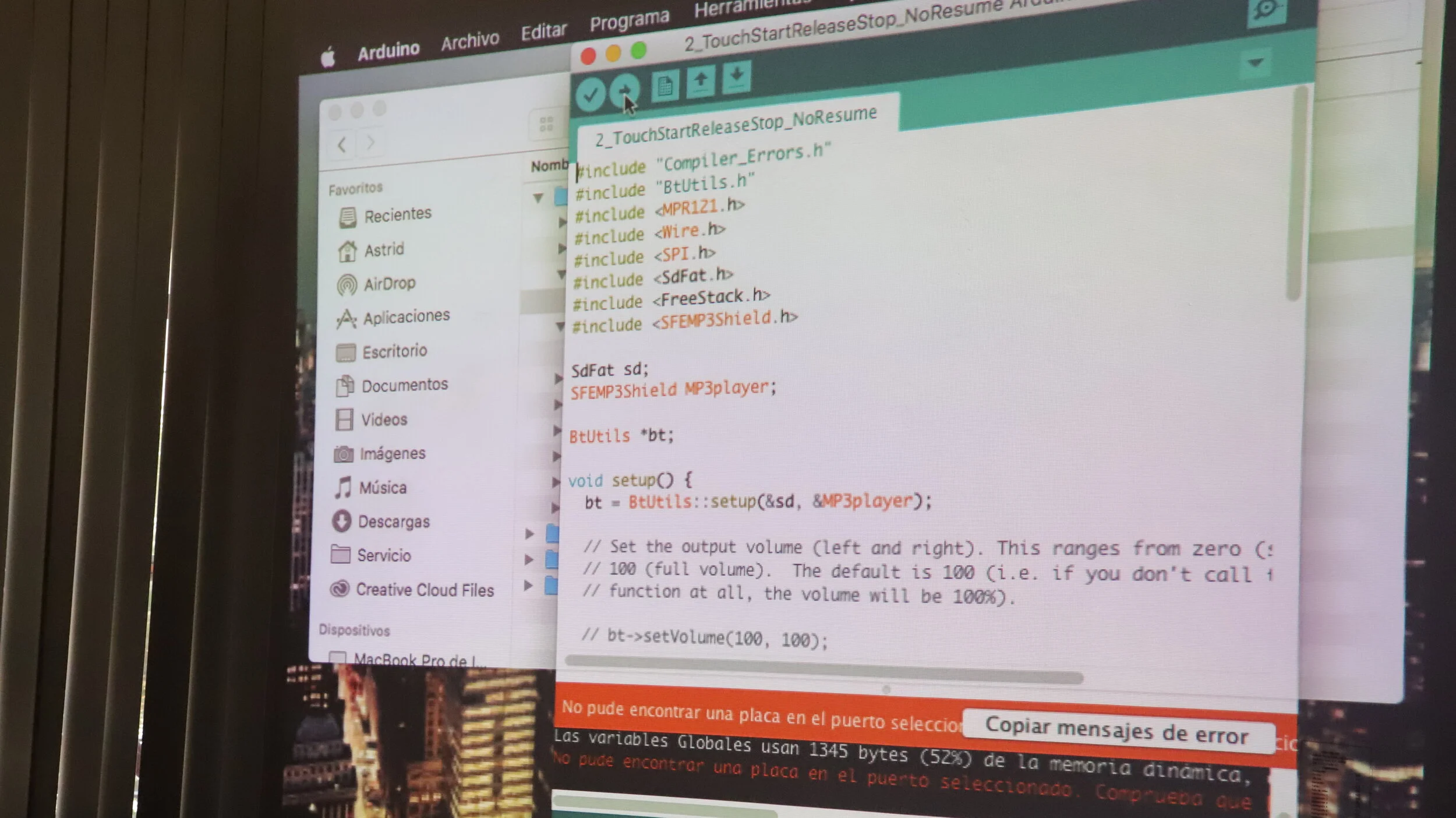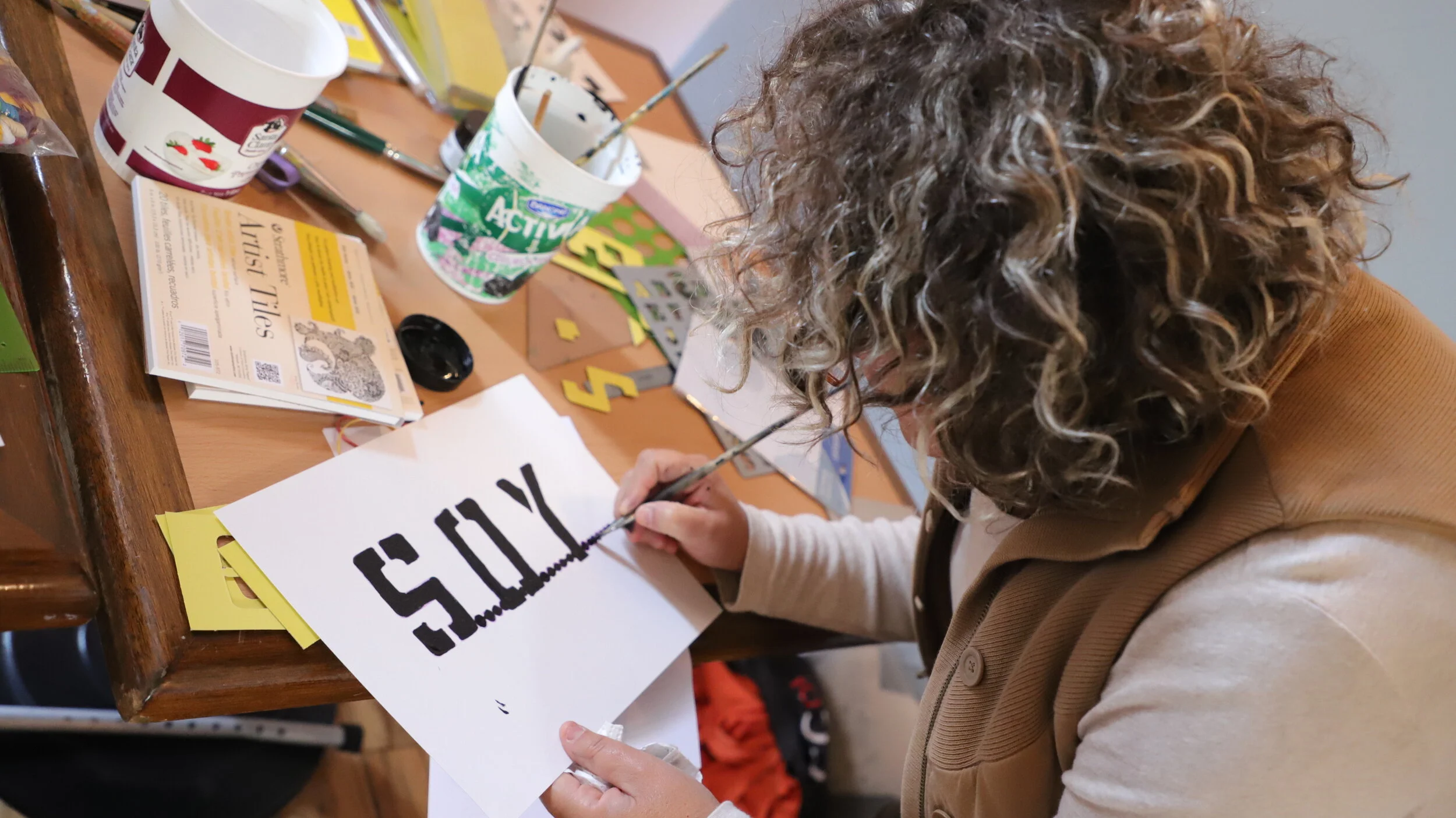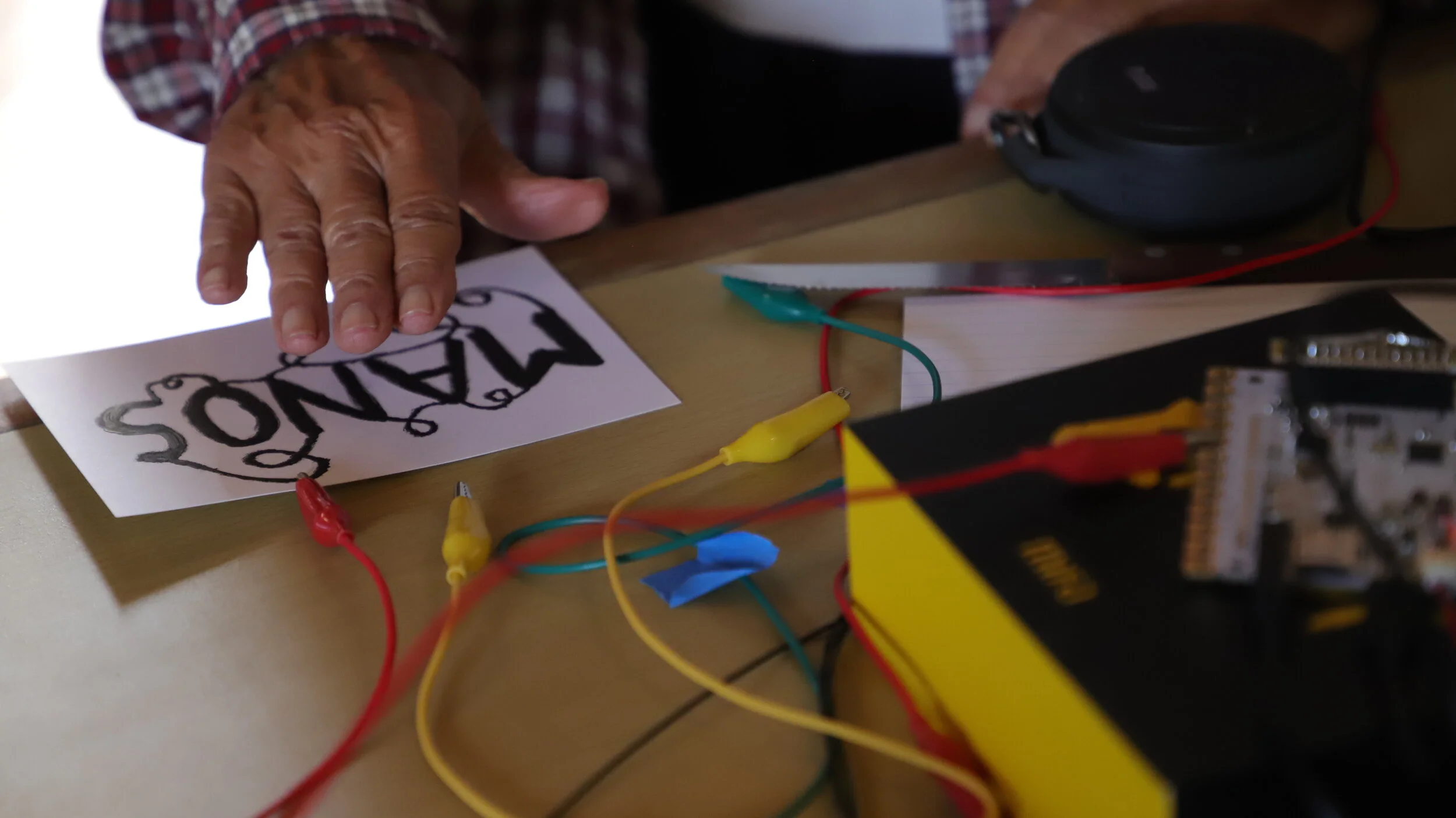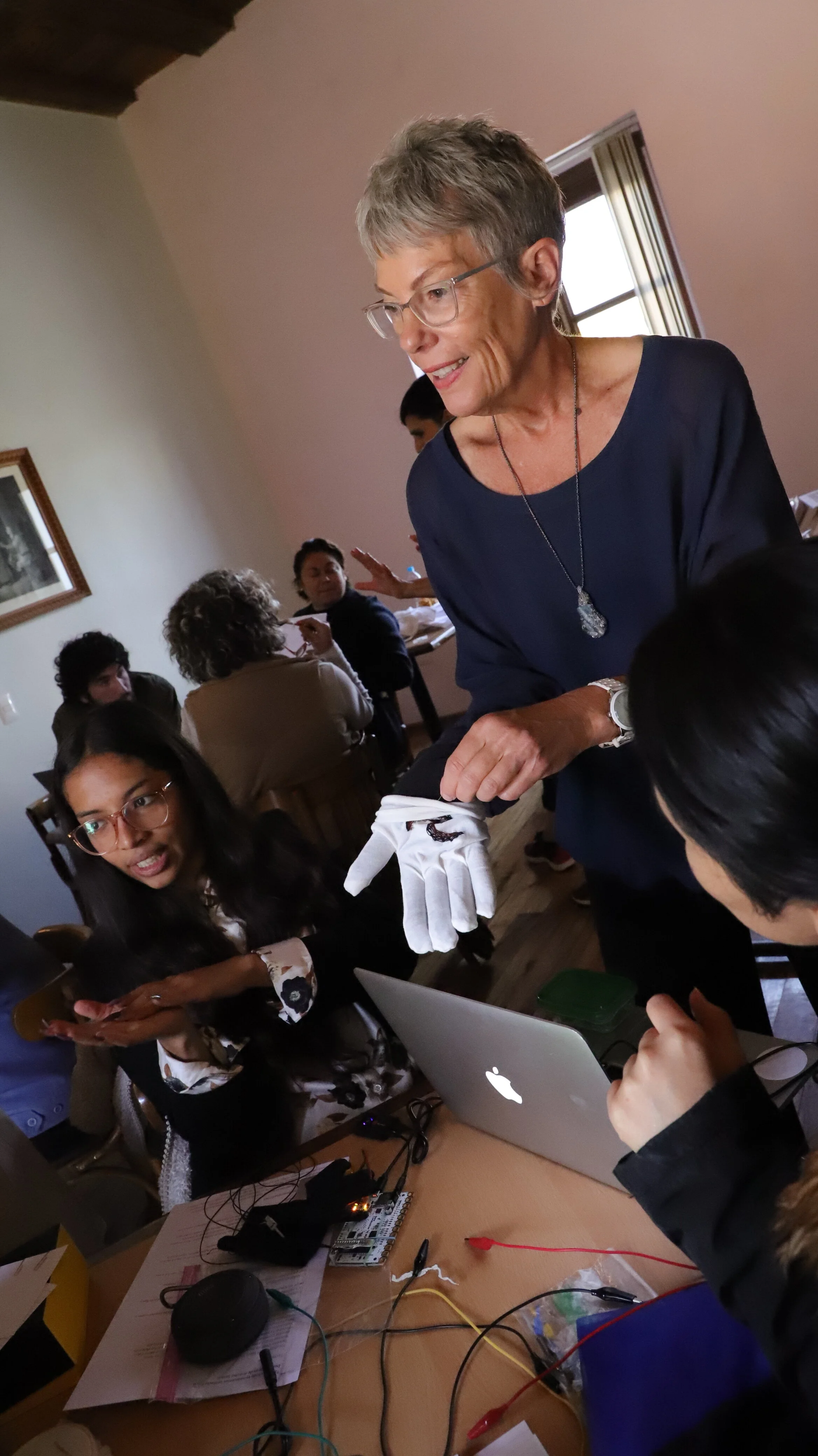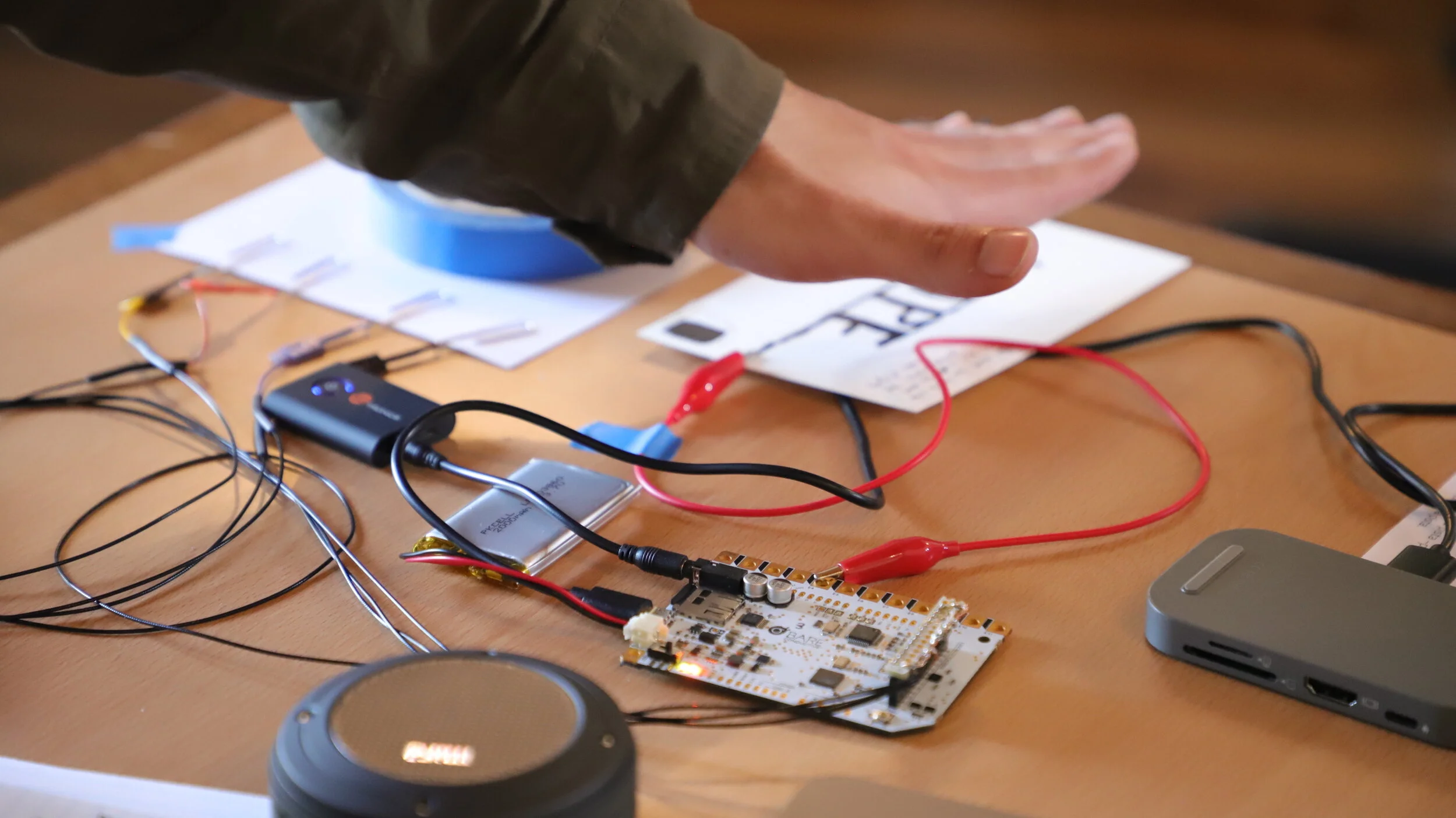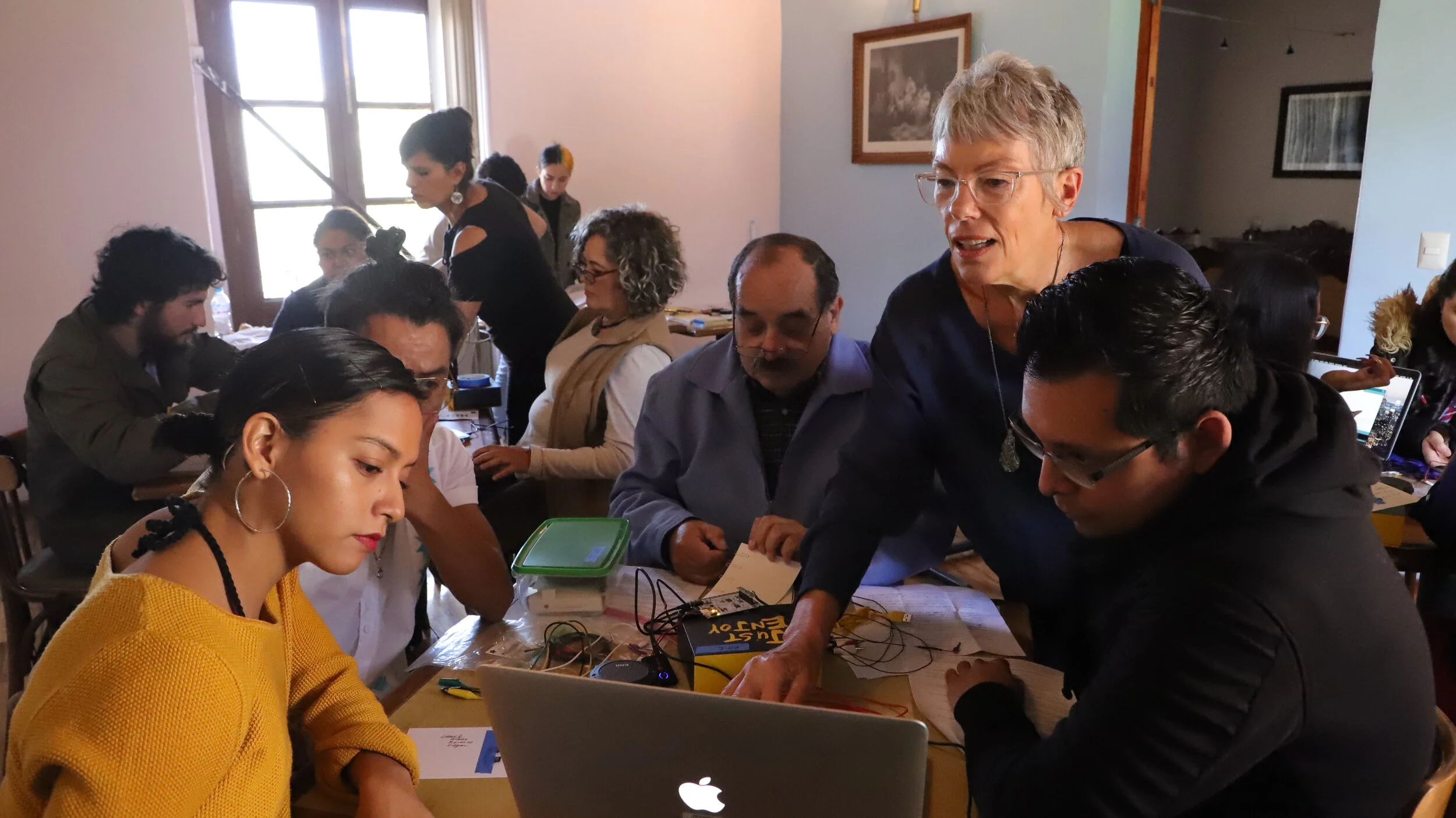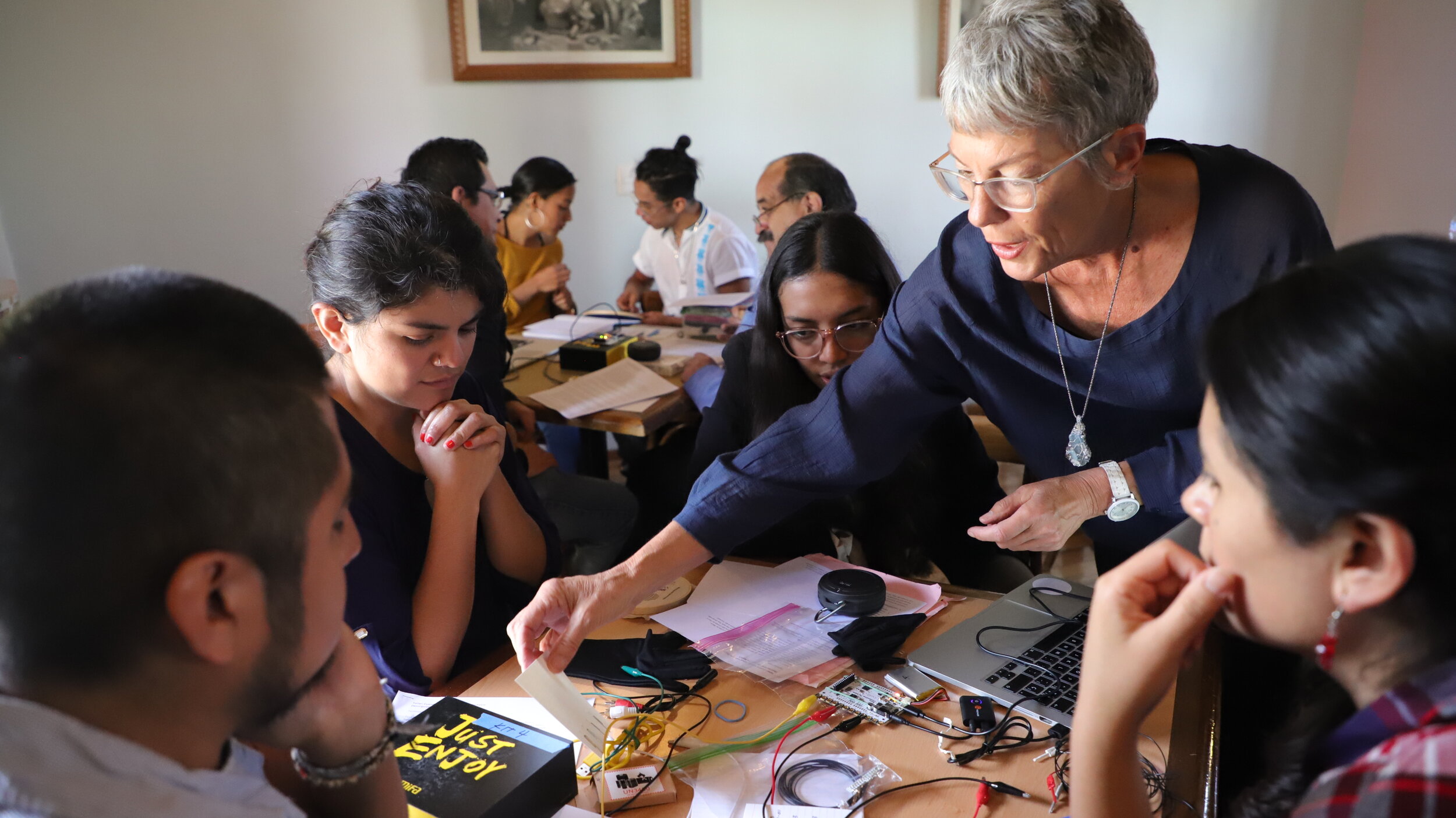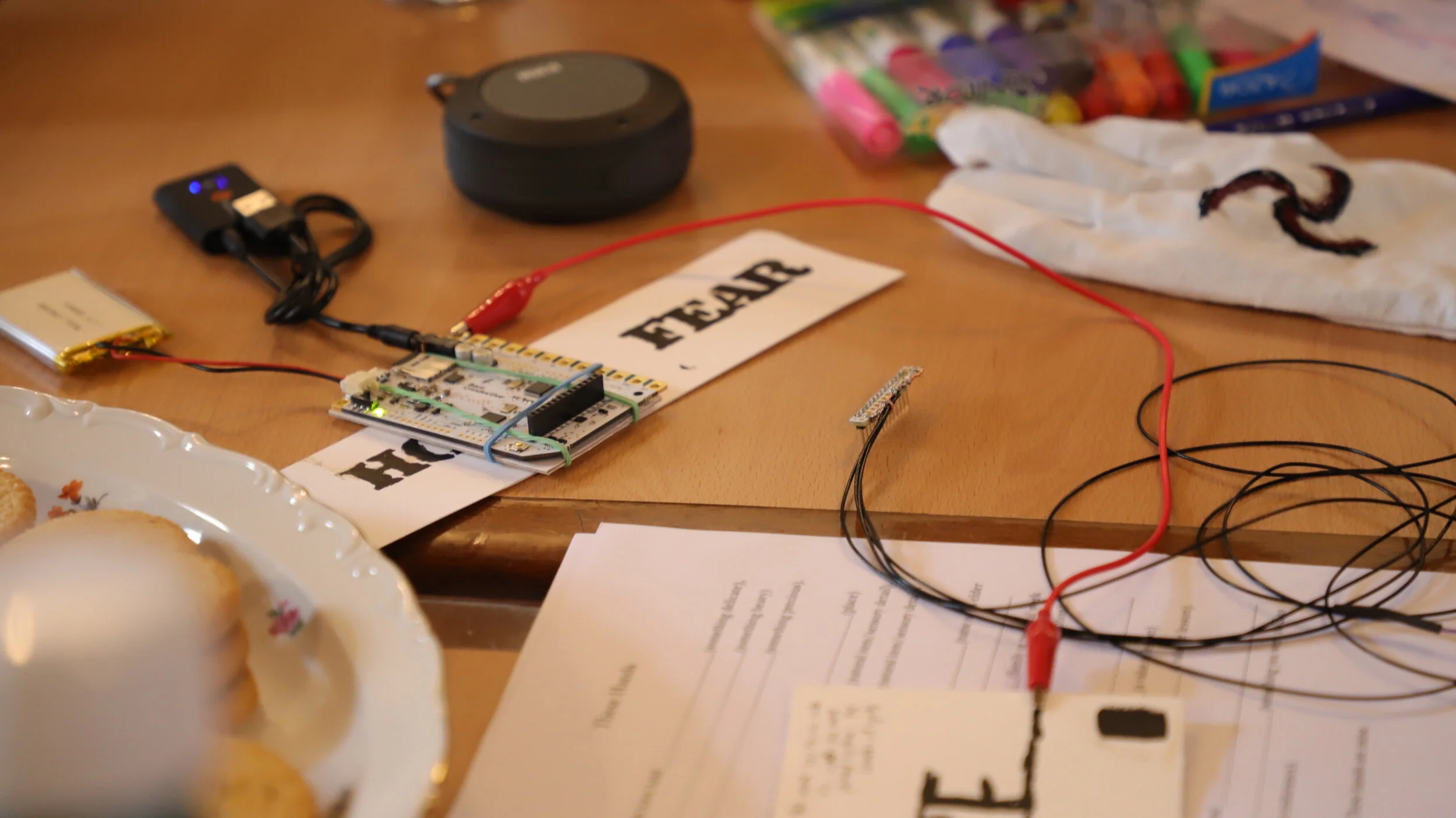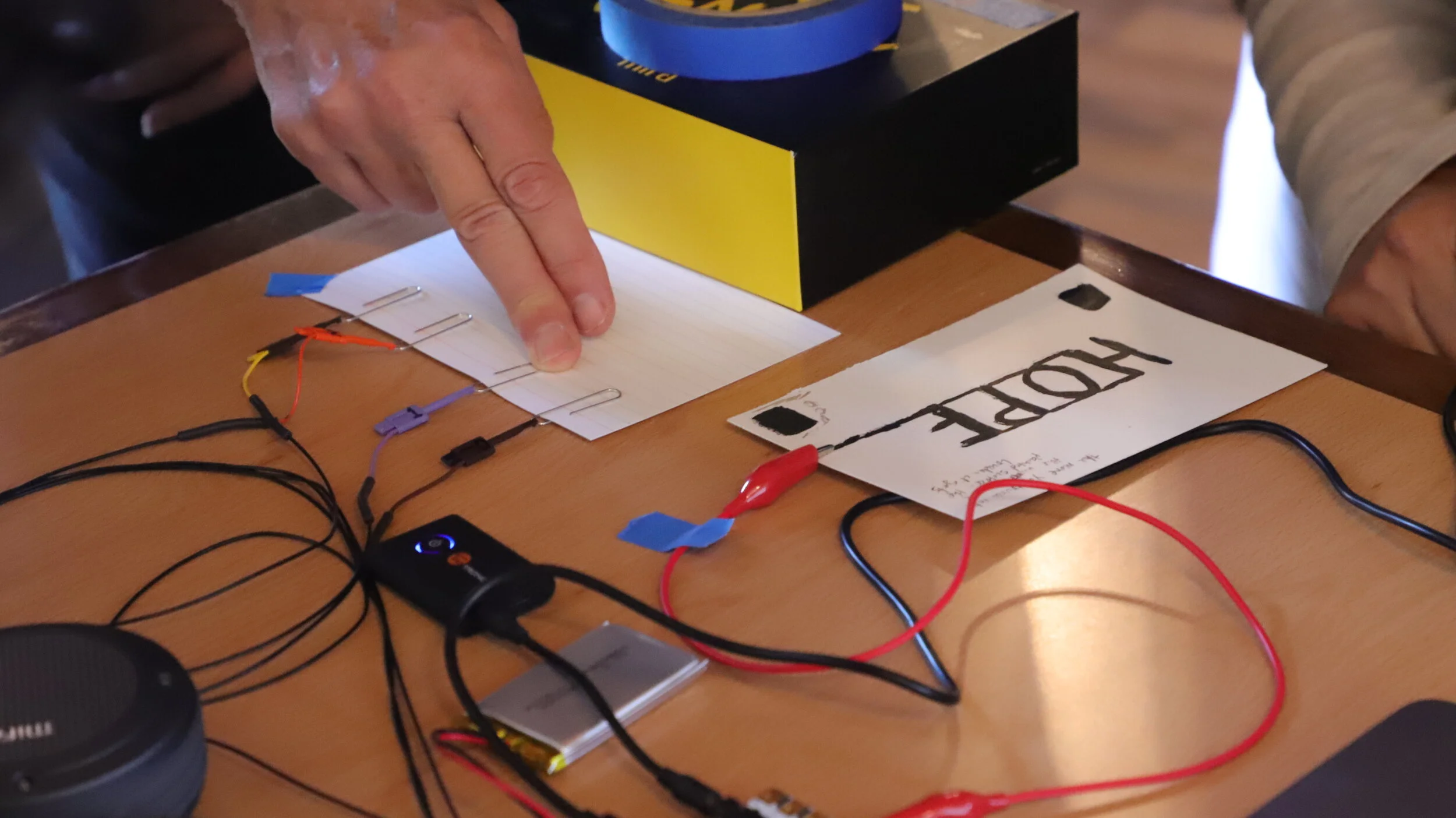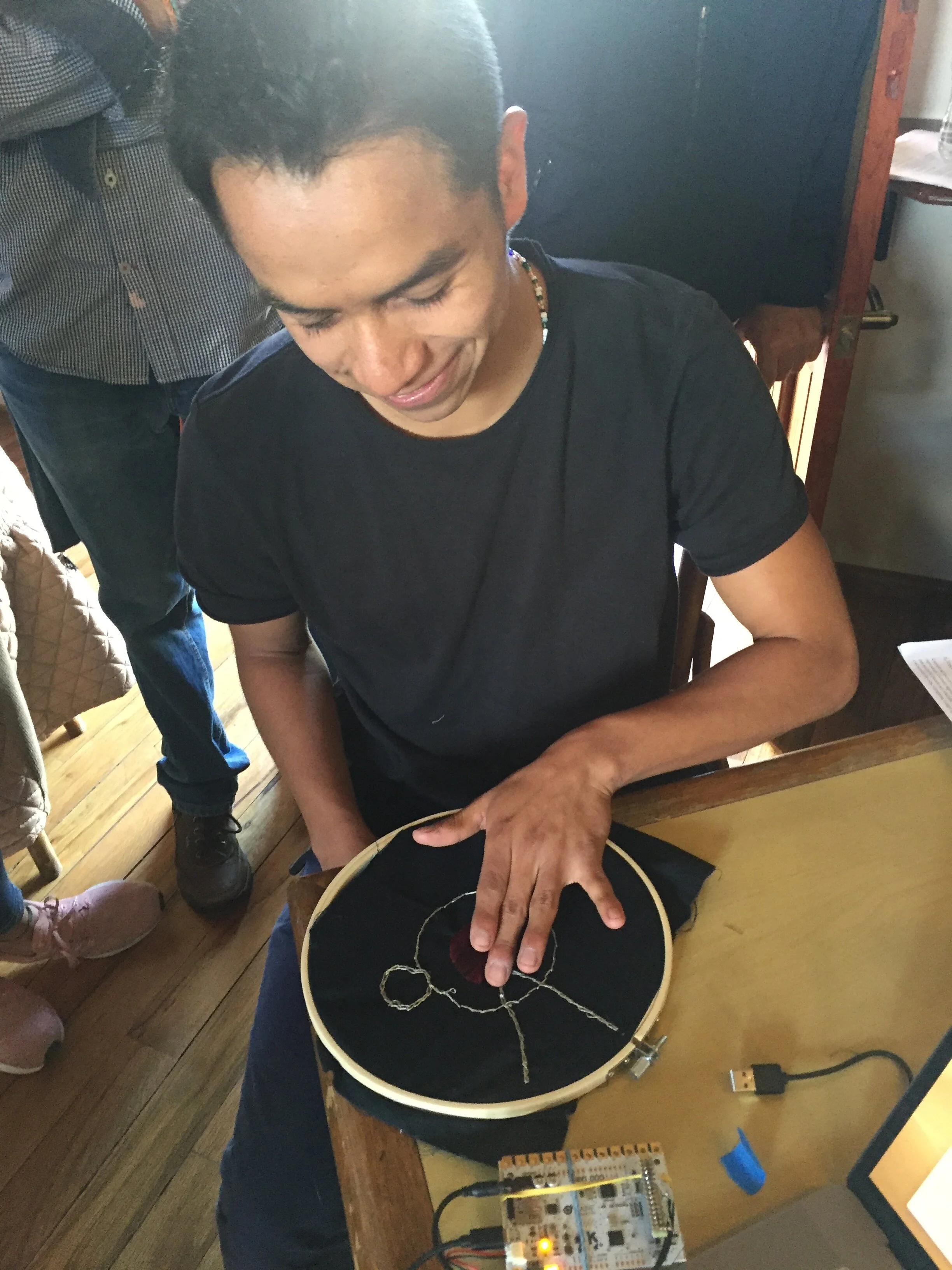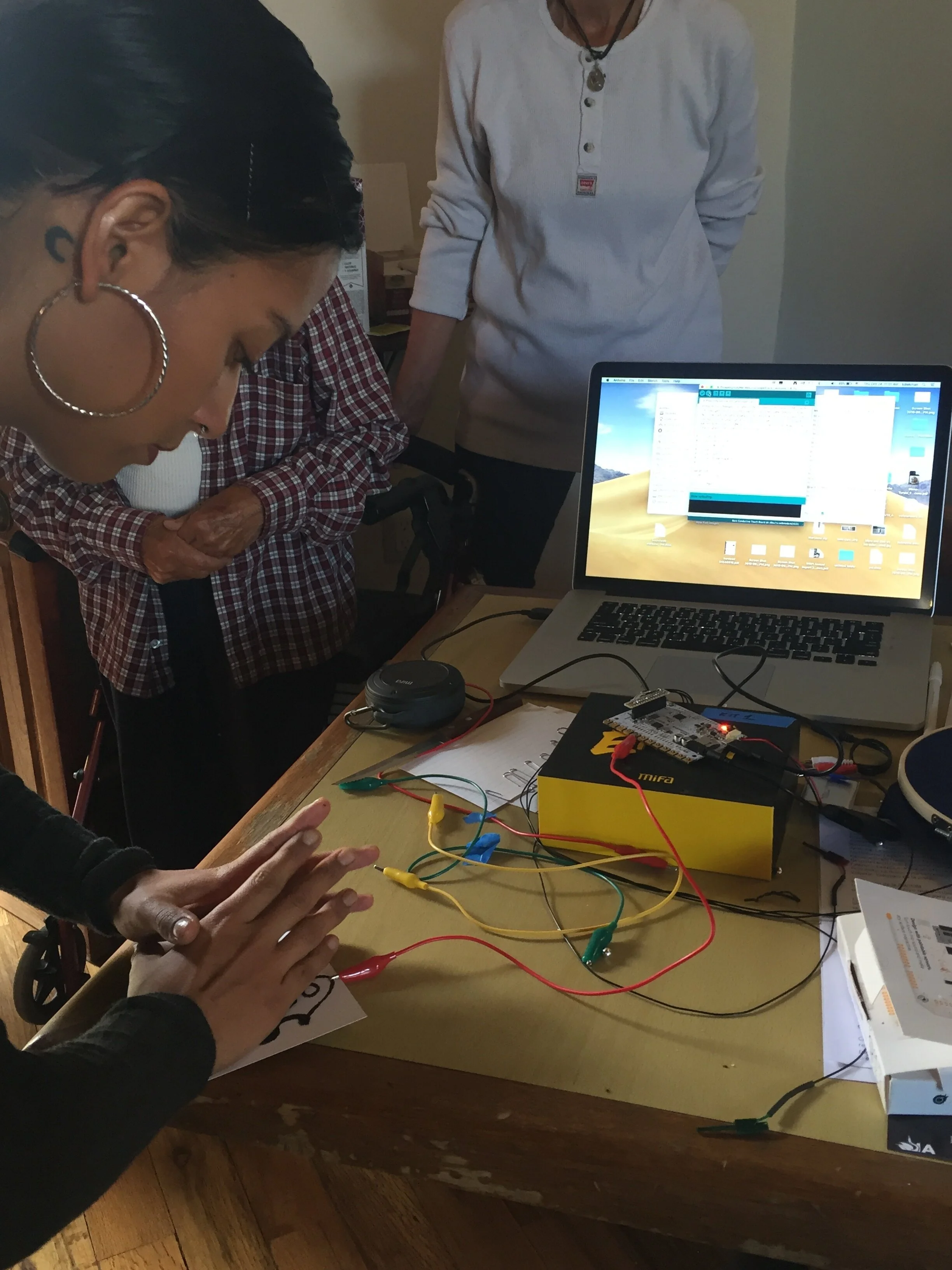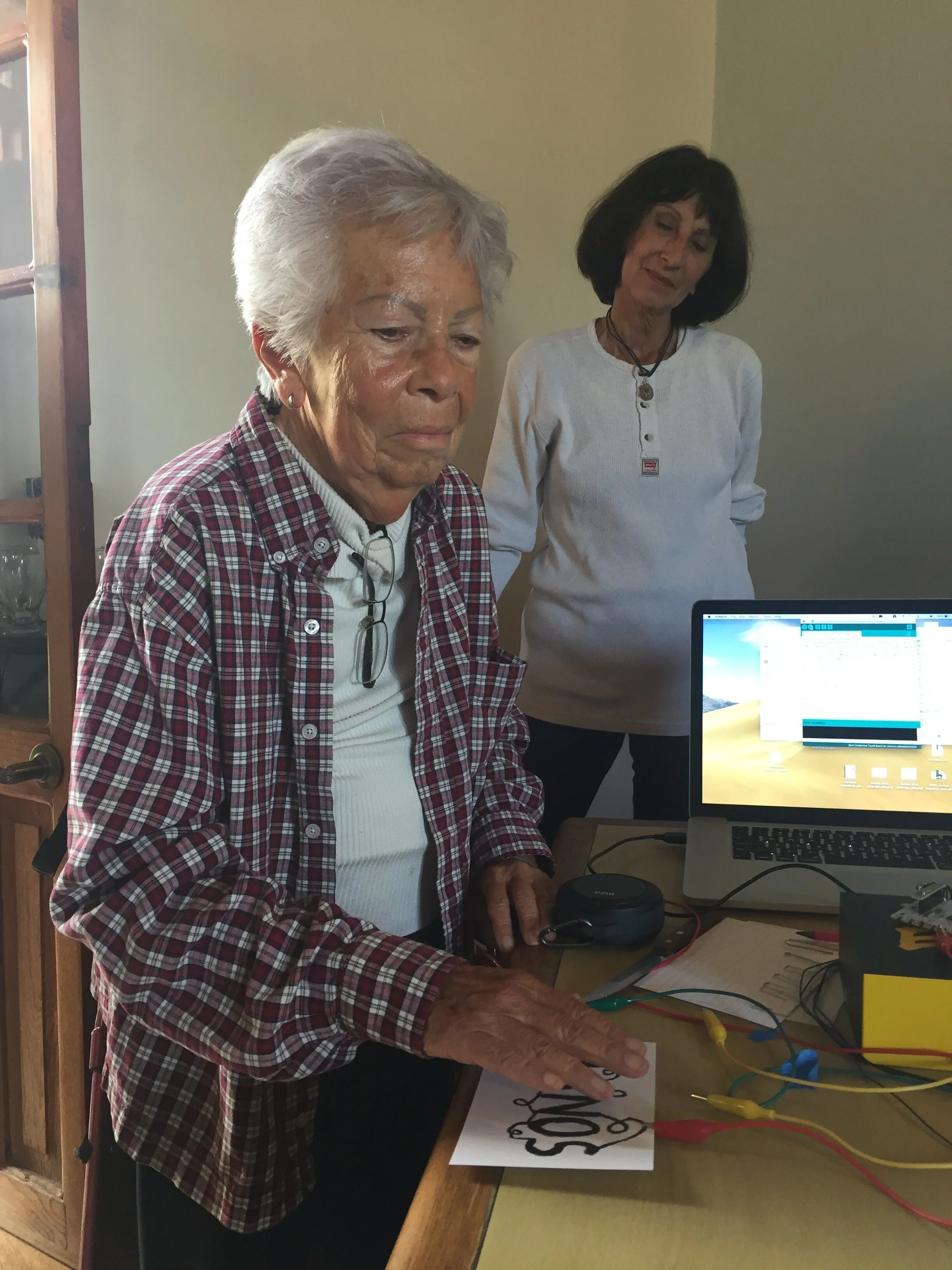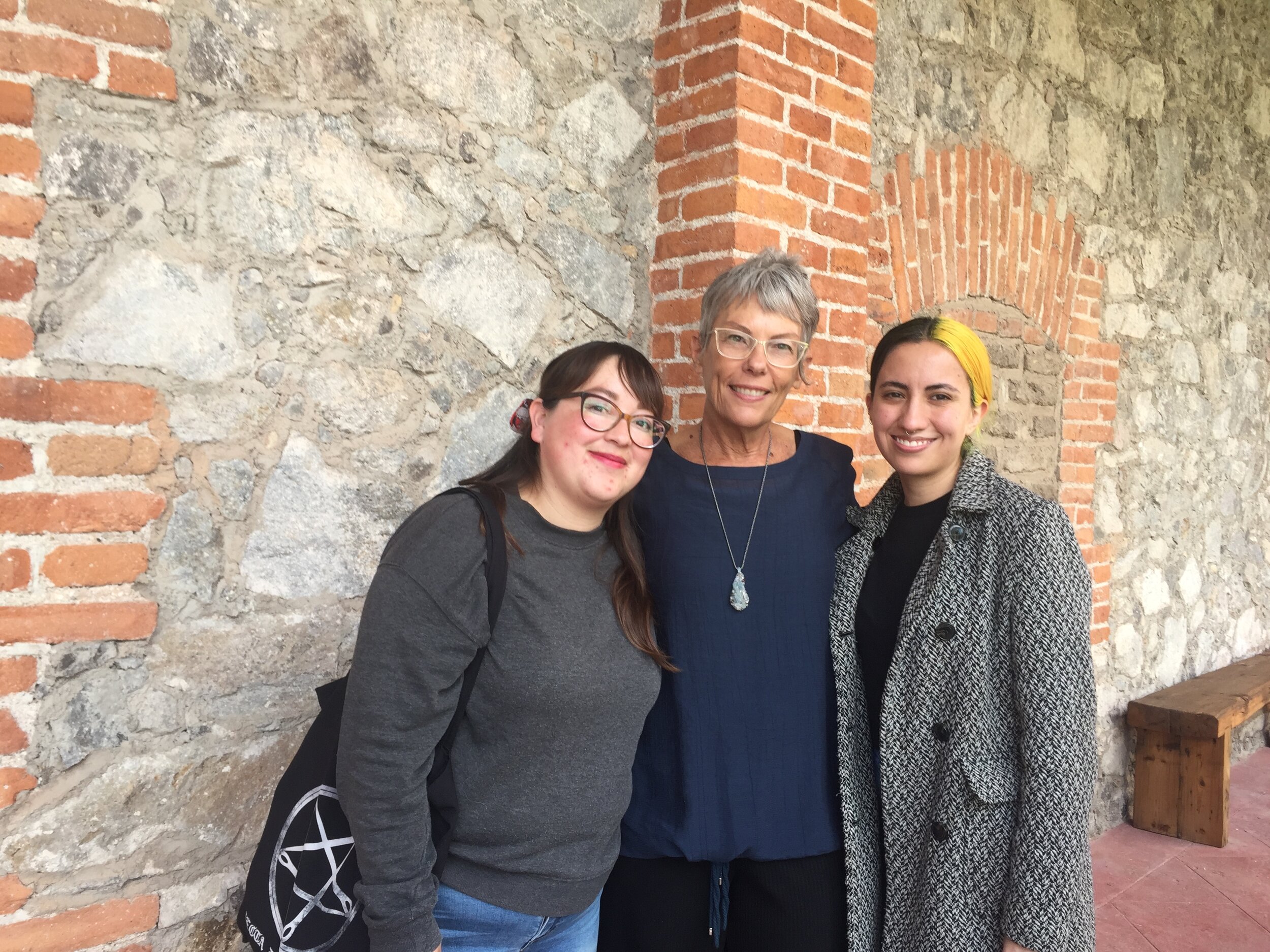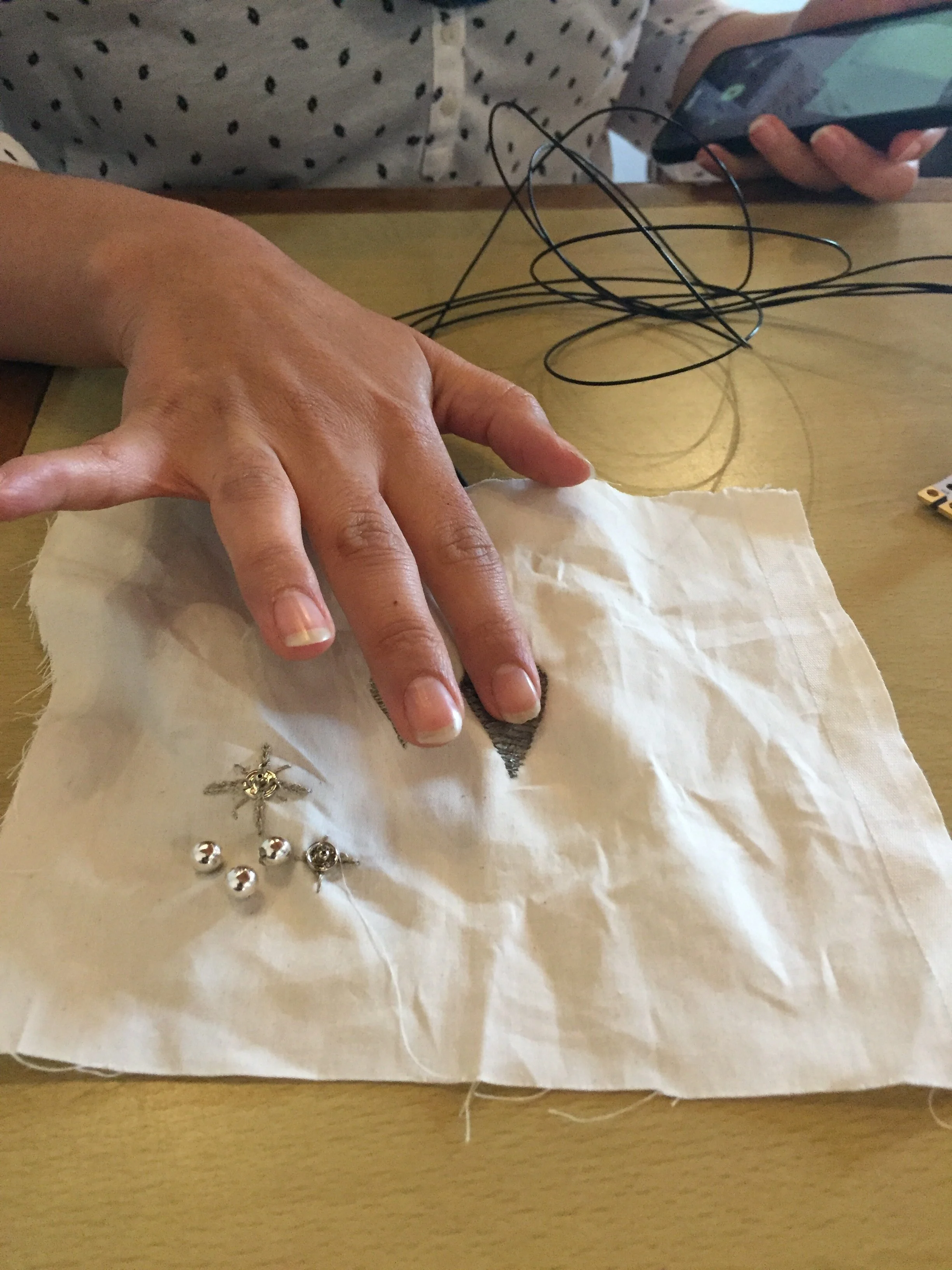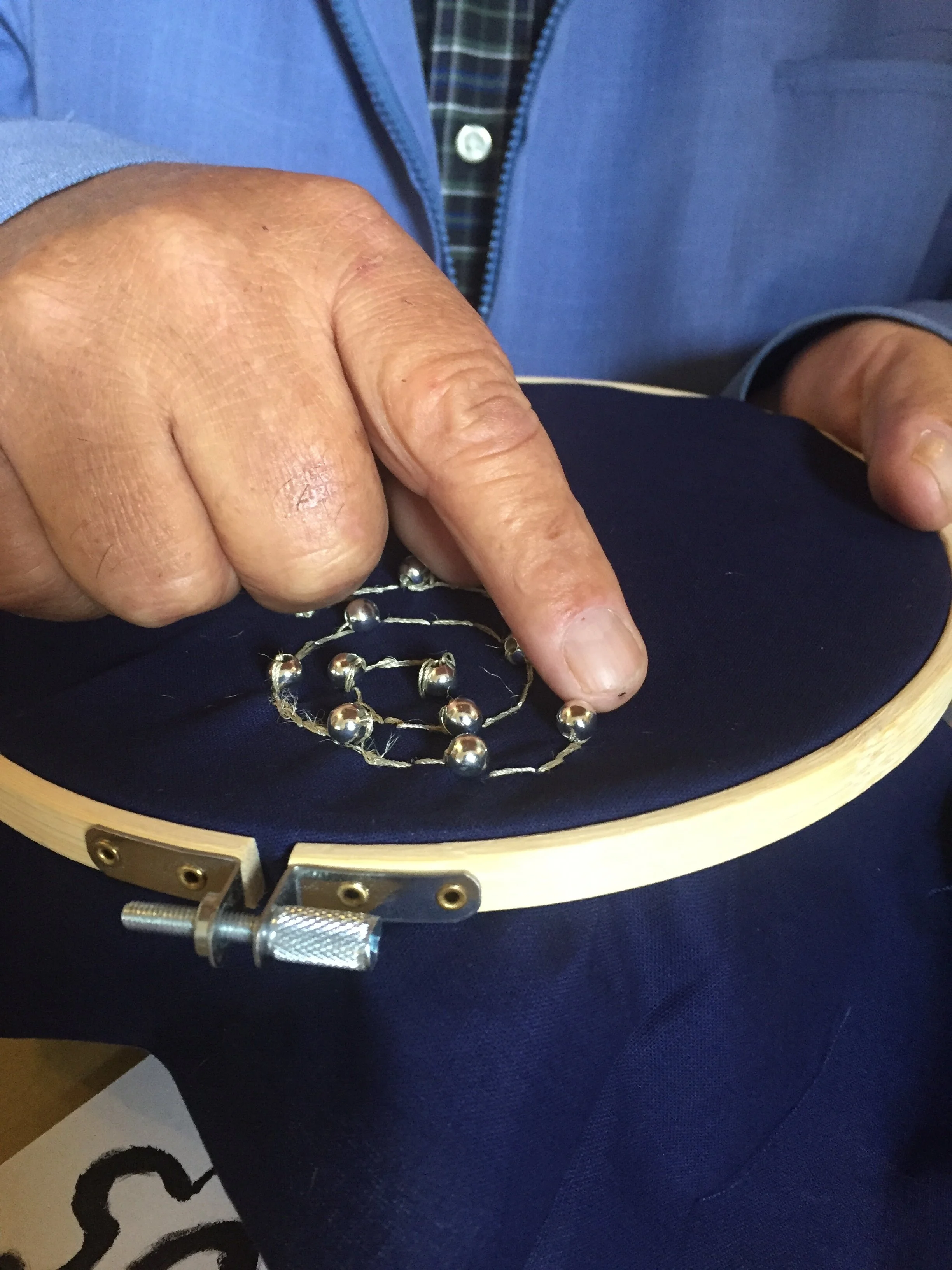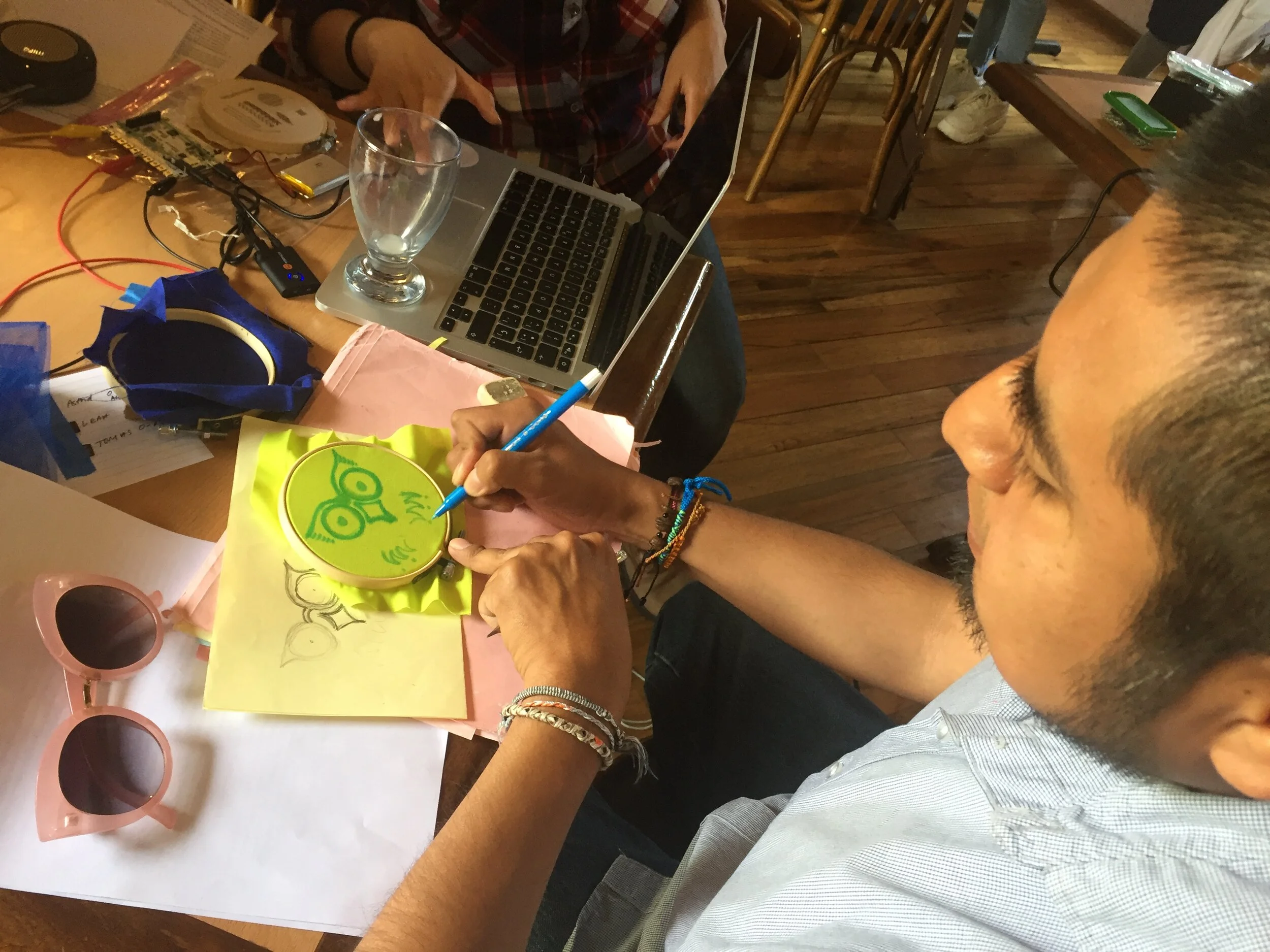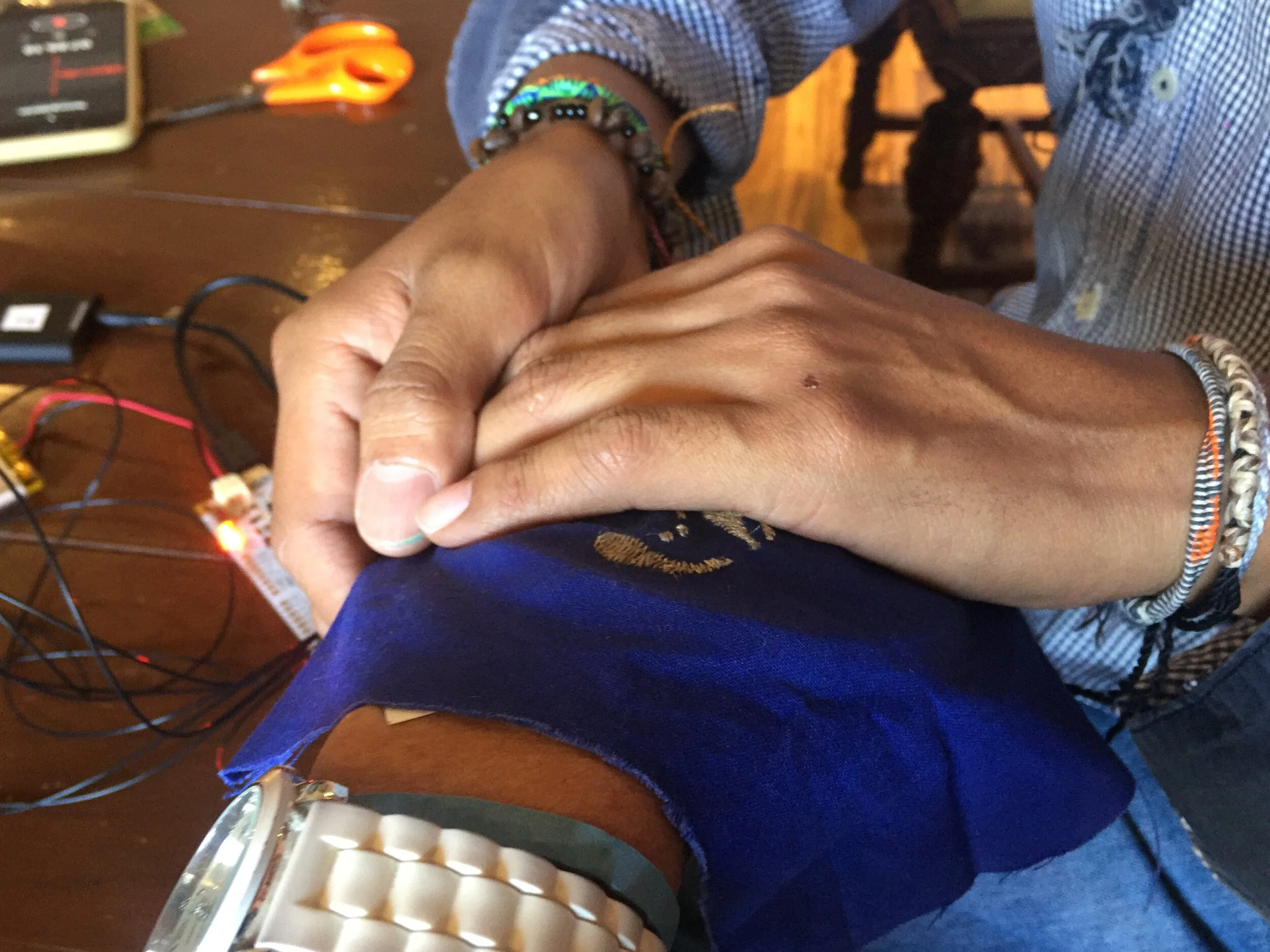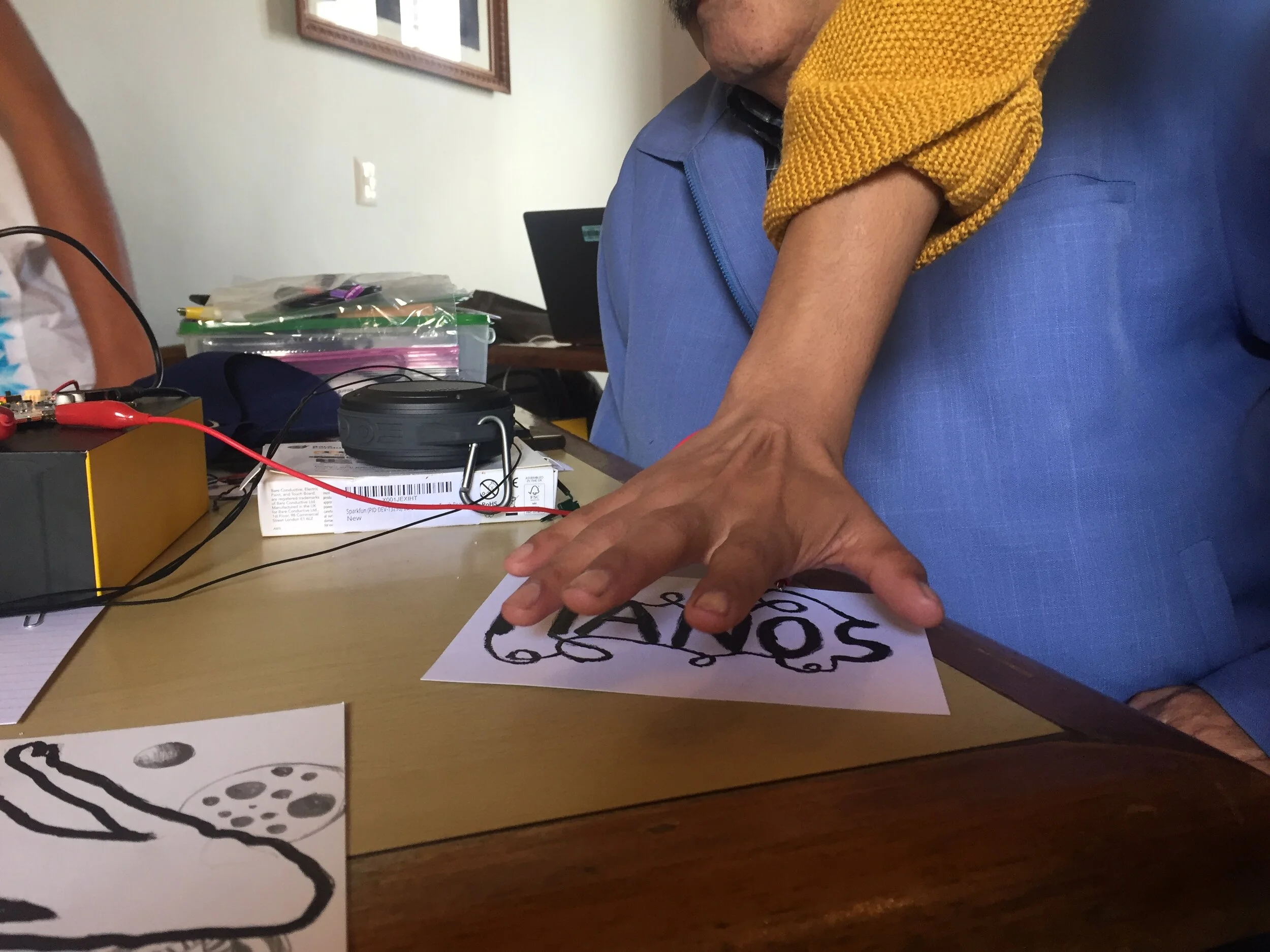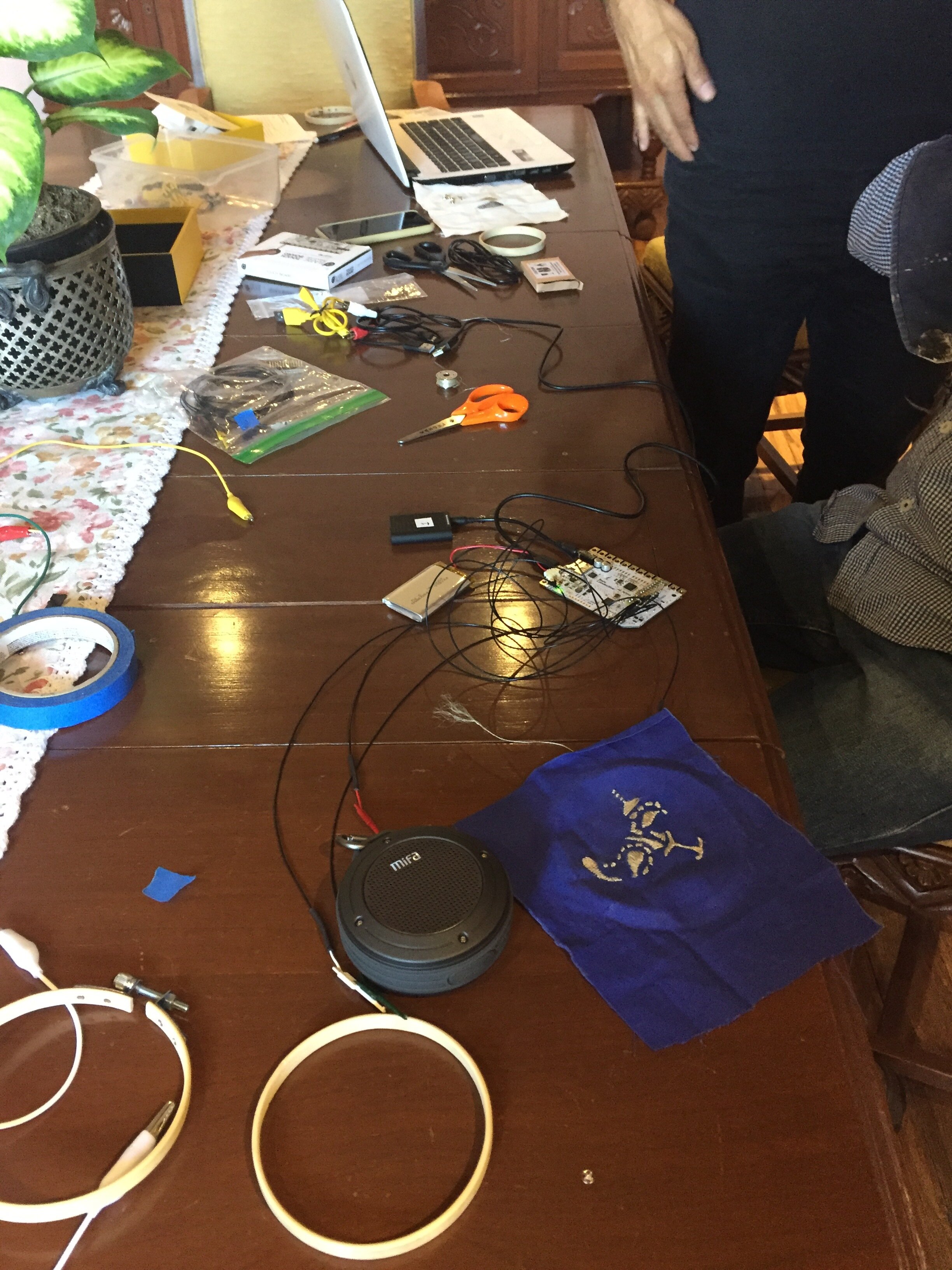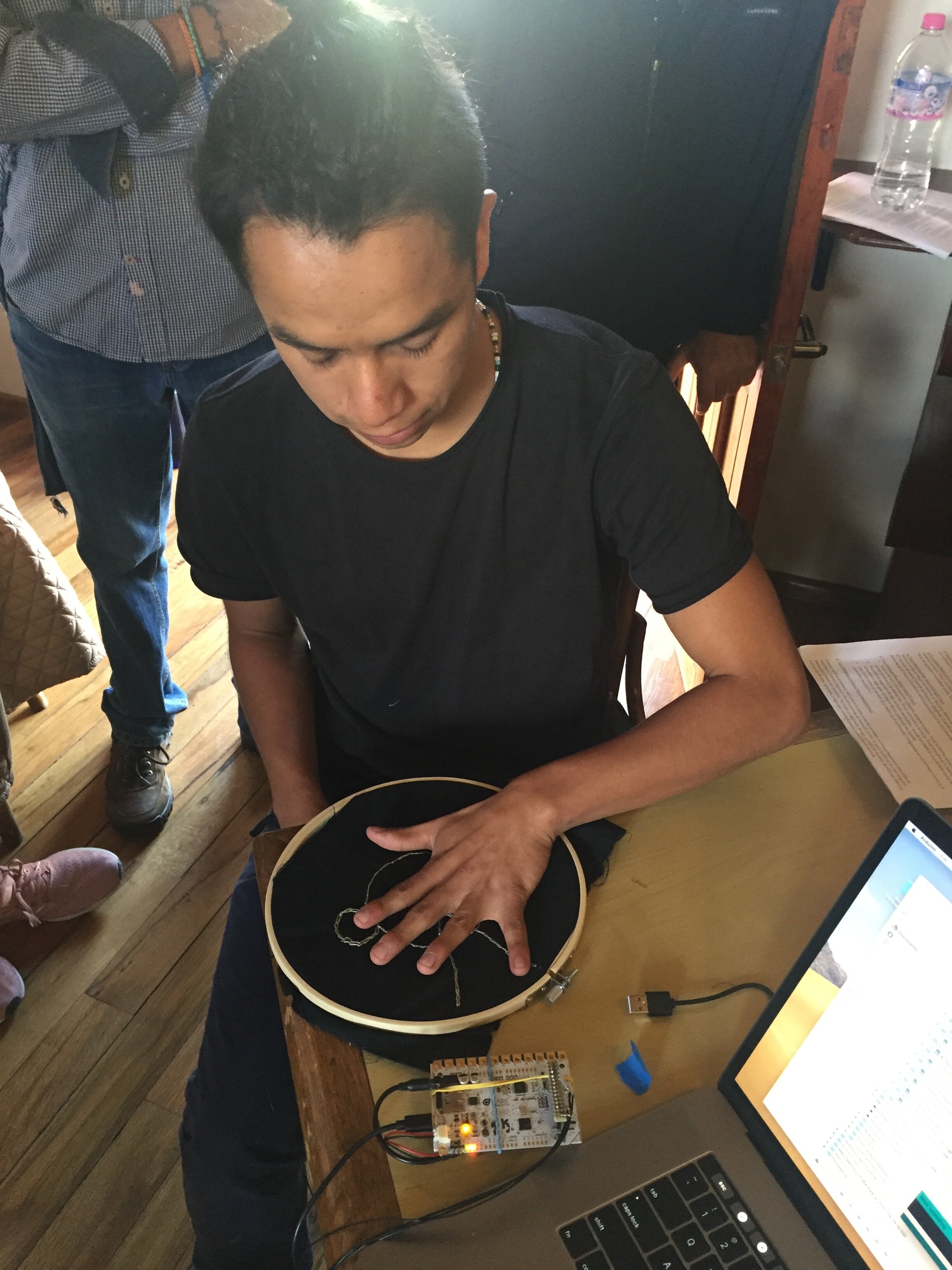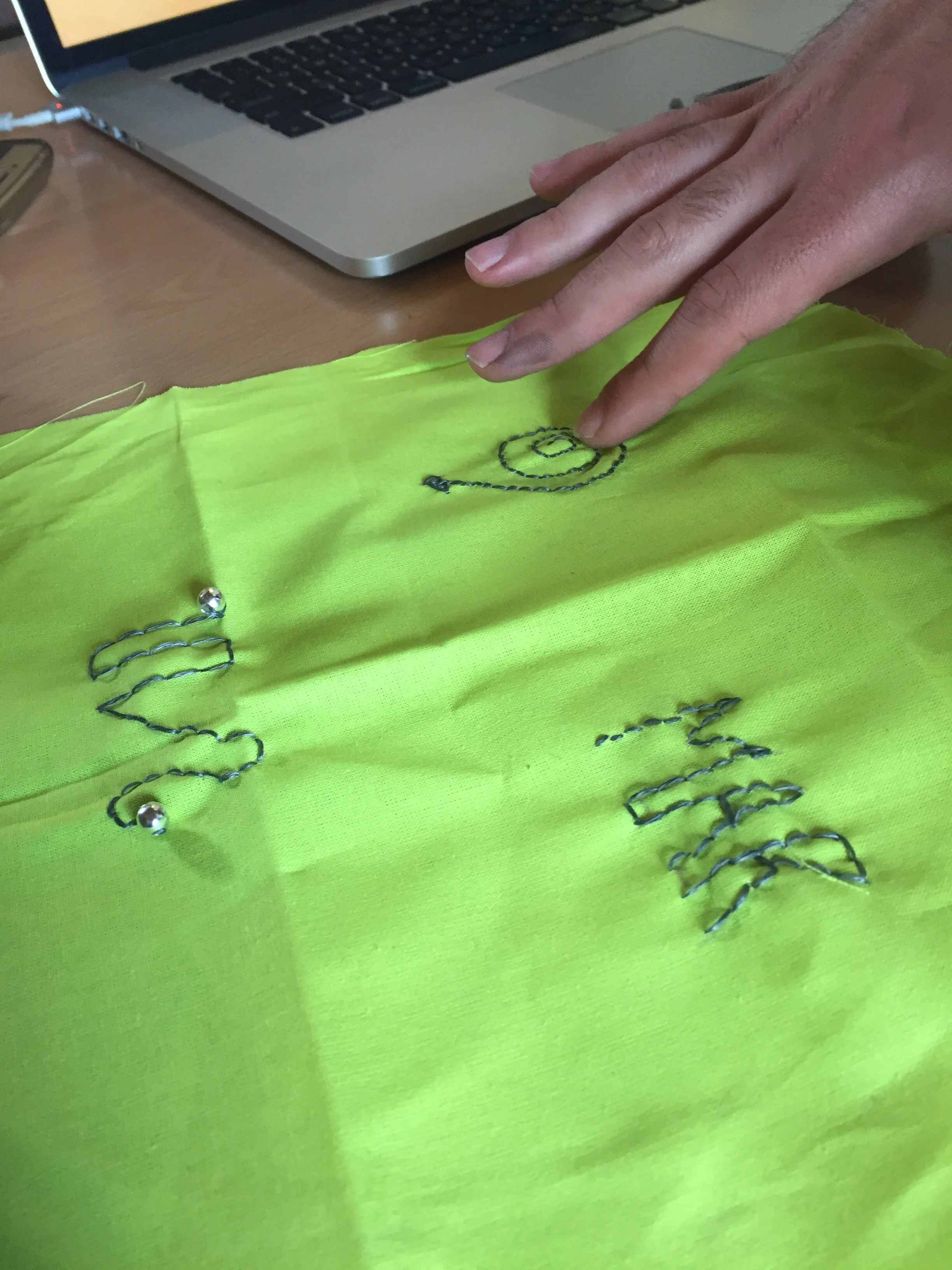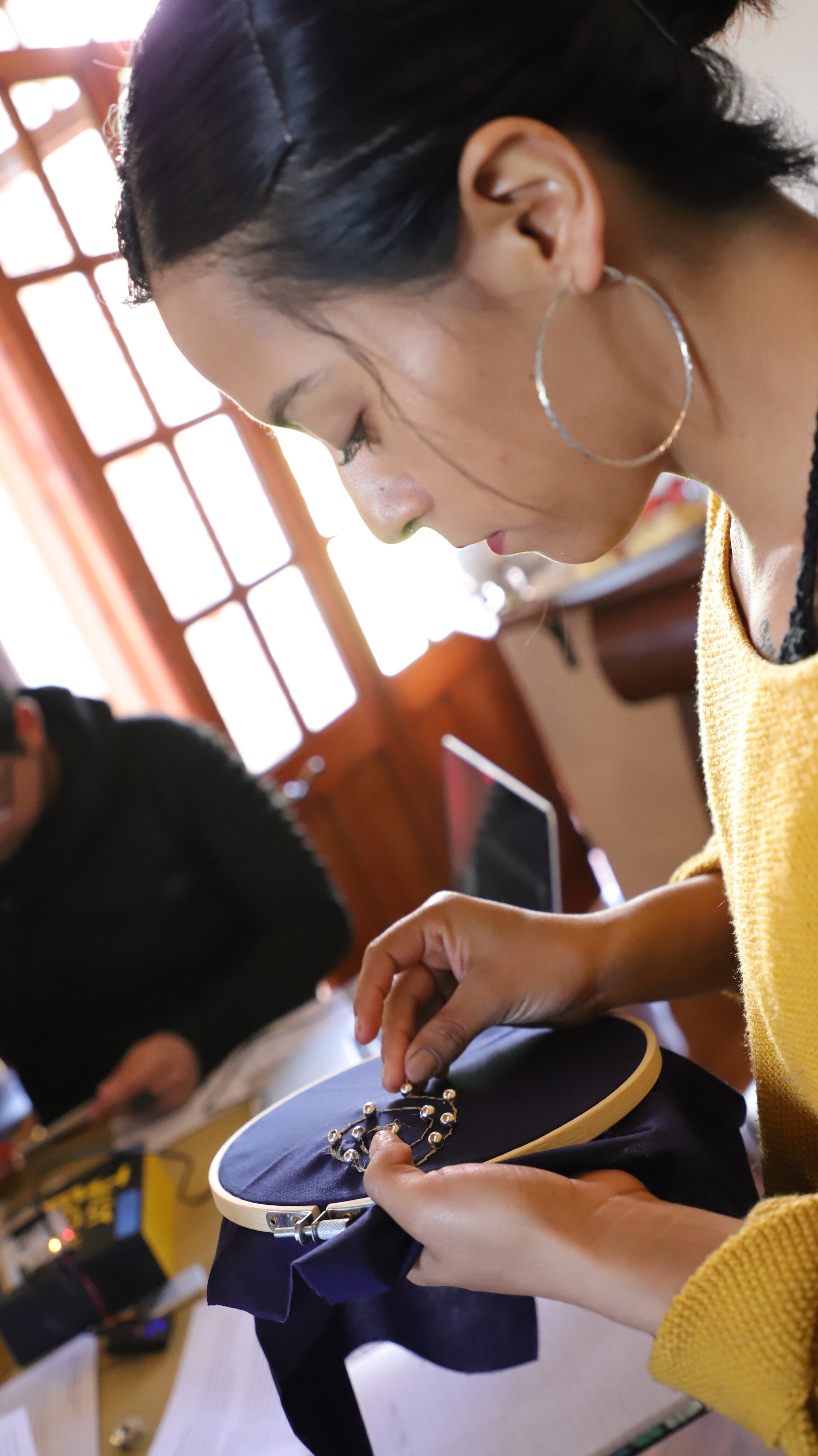When We Touch: Workshop
Let’s expand the language of touch. We enter into a sensuous continuum with the artwork, oscillating between the representation of another’s experience and reflection on our own, so as to generate new shared subjectivities.

Workshop Participants, Pachuca, Mexico
Tactile and Haptic Exercises

Design by Milton U. Onofre Vásquez. To hear his story, he invited participants to hug him for the duration of the story.
Why touch?
Tactility effects how we feel. Empathy. Health. Understanding. Gratitude. Respect. Connection. Condolence. Knowledge. Explore and discuss touch within your own personal and cultural knowledges, and how these inform our choices of design, gesture, and interaction. Participants considered wearables and agency for the interactors, the teller and the listener. How long do you hold someone’s hand to listen to their story? How firmly do you press it? What does it mean to let go in the middle of the telling?
Writing and Recording Stories

Bertha González Pérez sharing her story with Kristine Diekman.
Storywriting
A story is the shortest distance between two people.
Write and record messages or stories in the language of your choice using simple recording devices, pre-existing audio files when necessary, and basic audio editing software. Tactile sensors we build play these messages in the voices of the writers. For the workshop in Mexico we used the exercise “These Hands” as the writing prompt (courtesy of the Story Center, Berkeley, CA, USA). Each story is edited in sections to be mapped onto design elements.
Physical Computing, Programming and Electronics
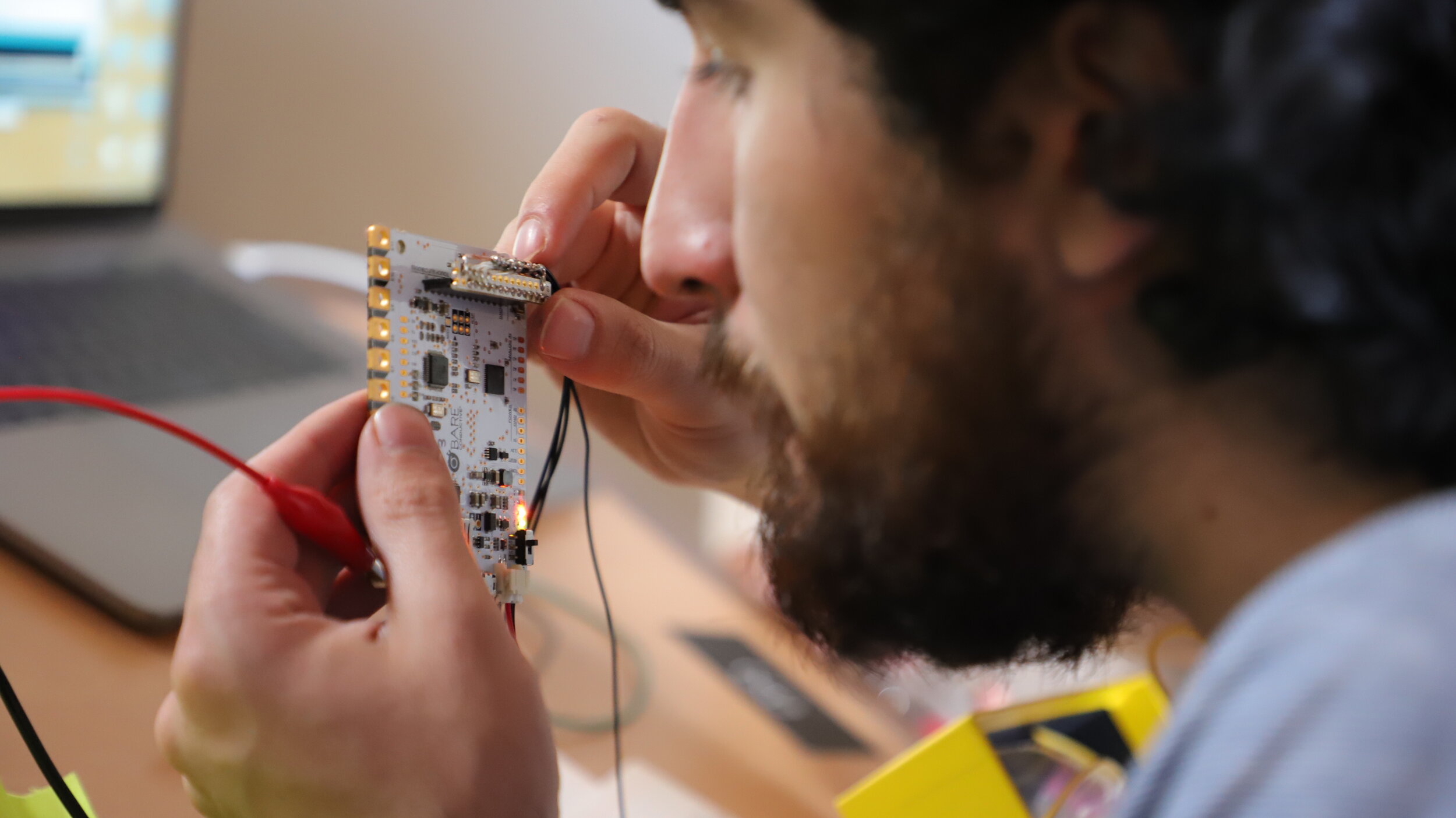
Pablo Lavaniegos exploring the TouchBoard.
Computing and interface design
Experiment with and learn the basics of physical computing by creating touch sensitive interfaces using pre-existing computer coding (Arduino sketches), prepared microprocessors (Bare Conductive Touch Board), sensors made with thread, paint, and other conductive materials. We have designed Arduino programs that use different qualities of touch, and electronic components for proximity sensing, direct touch and prototypical wearables. Special thanks to Craig James for programming and fabrication collaboration.
Embroidery and Sensor Design

Design and Embroidery by Astrid Amado
"My design is formed by different kinds of embroidery. I wanted to provide a mix of textures that change by the way you touch them. My story has two parts, one that is lovely and warm, and the other that is lonely and sad. You can feel that change in the design: I choose to make a feather (or something like that) inside of two circles because it represents the fragile thing that is protected by something else.”- Ingrid Astrid Amado.
Design the narrative interface considering psycho-geography. How do you map your story? Is it wandering or direct? Does the user search? Conductive thread is a tactile interface that requires different qualities of touch depending on density and texture of the embroidery. Does the story ask for light touch of just a finger tip, tracing the line, or a firmer motion over the surface? Is the surface highly textured reflecting the rawness of the story? Can the user move to different parts of the story? Special thanks to Secta de Bordado (@sectadebordado) for teaching embroidery.
